Split Gastroadvent at Chops Grill Celebrates Prosciutto, Joy, and Radio Journalists
December 19, 2021 - Split Gastroadvent at Chops Grill featured an impressive culinary display of steak and prosciutto-inspired dishes as radio journalists were honored on Sunday.
Radio journalists and representatives of the tourist boards and project partners lit the fourth Gastroadvent candle, decorating the wreath made this year by artist Tonka Alujević. Along with the herbs of the Mediterranean, the wreath represents a lifebuoy, which Tonka says is a maritime object that serves to save a man who, for various reasons, is helpless in the sea and is in mortal danger. And that is exactly the health and political position we are in at the moment."
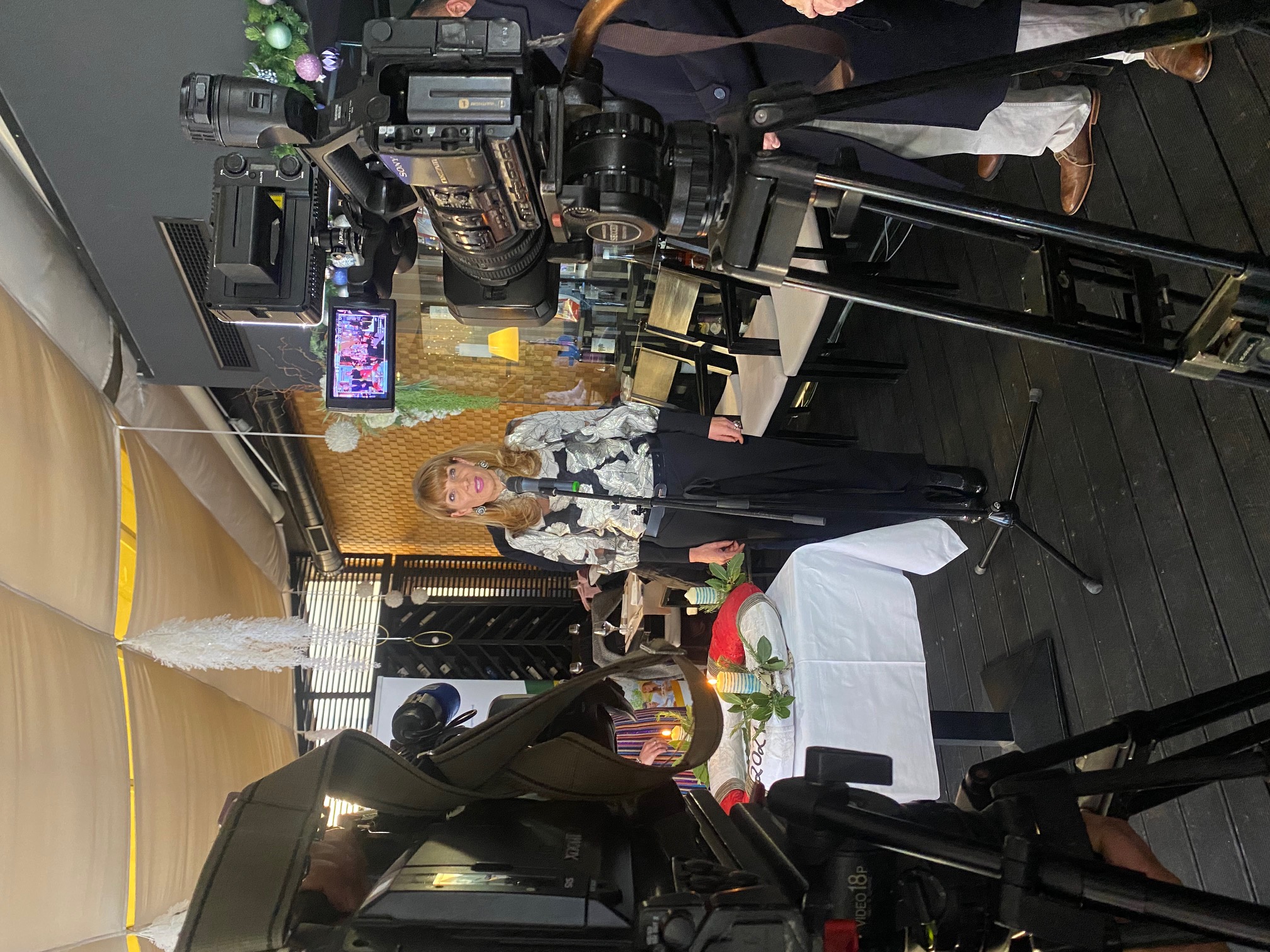
Gastroadvent is a unique event that has promoted the Mediterranean diet for decades through a fusion of nutrition, gastronomy, and tourism. Thanks to the engagement and participation of dedicated journalists, who continue to bring light to Split, the event persistently shares scientific knowledge woven into gastronomic skills, the numerous health benefits of the Mediterranean diet, and the preparation of dishes from unique ingredients. The event's philosophy is to pass on the existing advantages to fellow citizens and offer them to guests.

The Mediterranean diet is not a closed and defined list of foods or a list of dishes that guarantee the sequence of this diet model. This is evident in the way UNESCO described the Mediterranean diet in 2010 when it recognized it as an intangible cultural heritage:
“Mediterranean nutrition is a set of skills, knowledge, practices, and traditions ranging from field to table, including crops, harvest, fishing, canning, processing, preparation and, in particular, food consumption. The Mediterranean diet is characterized by a dietary model that has remained unchanged over time and space and consists mainly of olive oil, cereals, fresh vegetables and fruits, moderate amounts of fish, milk, and meat, and many spices and moderate wine consumption, respecting the habits of individual communities.
Today, science and the protagonists are not talking about the Mediterranean diet, but about the way of the Mediterranean diet, which is not just a list of food and dishes. The mentioned term covers a much broader spectrum, so this gathering of ours shows it as well," says the Gastroadvent organizer, Olja Martinić.

Inspired by prosciutto and herbs, the culinary table was designed and prepared by the head chef of Chops Grill, Ivan Nikolic, sous chef Toma Tripalo, and Pastry Chef Filipa Jurcević. The menu featured fritters with prosciutto, bomboline, classic cold prosciutto / cheese platters with homemade fig jam and pickled vegetables, baked fruit wrapped in prosciutto served with burrata mozzarella, homemade Žrnovo macaroni with prosciutto and truffles, steak bits with prosciutto and plums, monkfish with prosciutto, and much more.
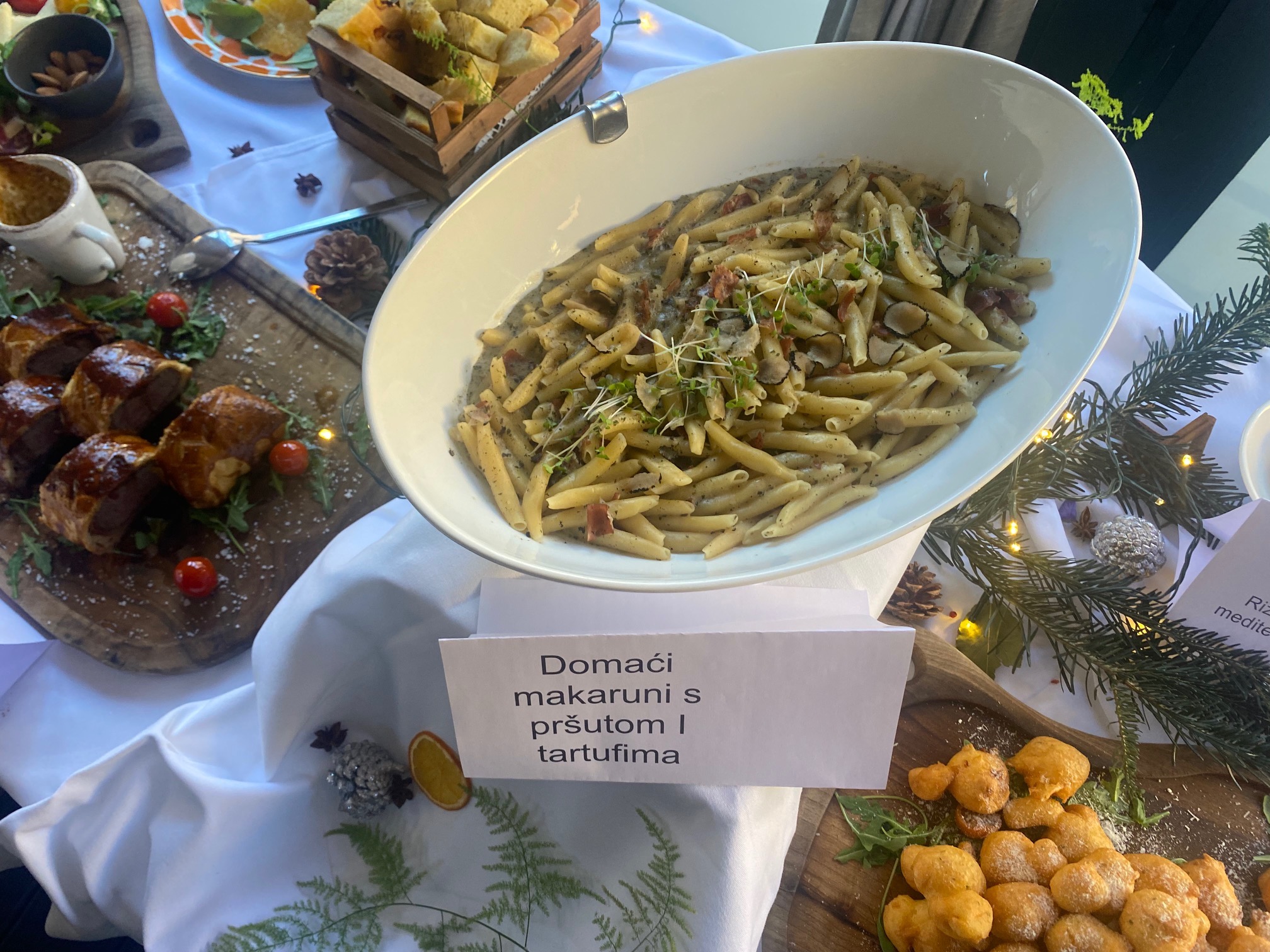
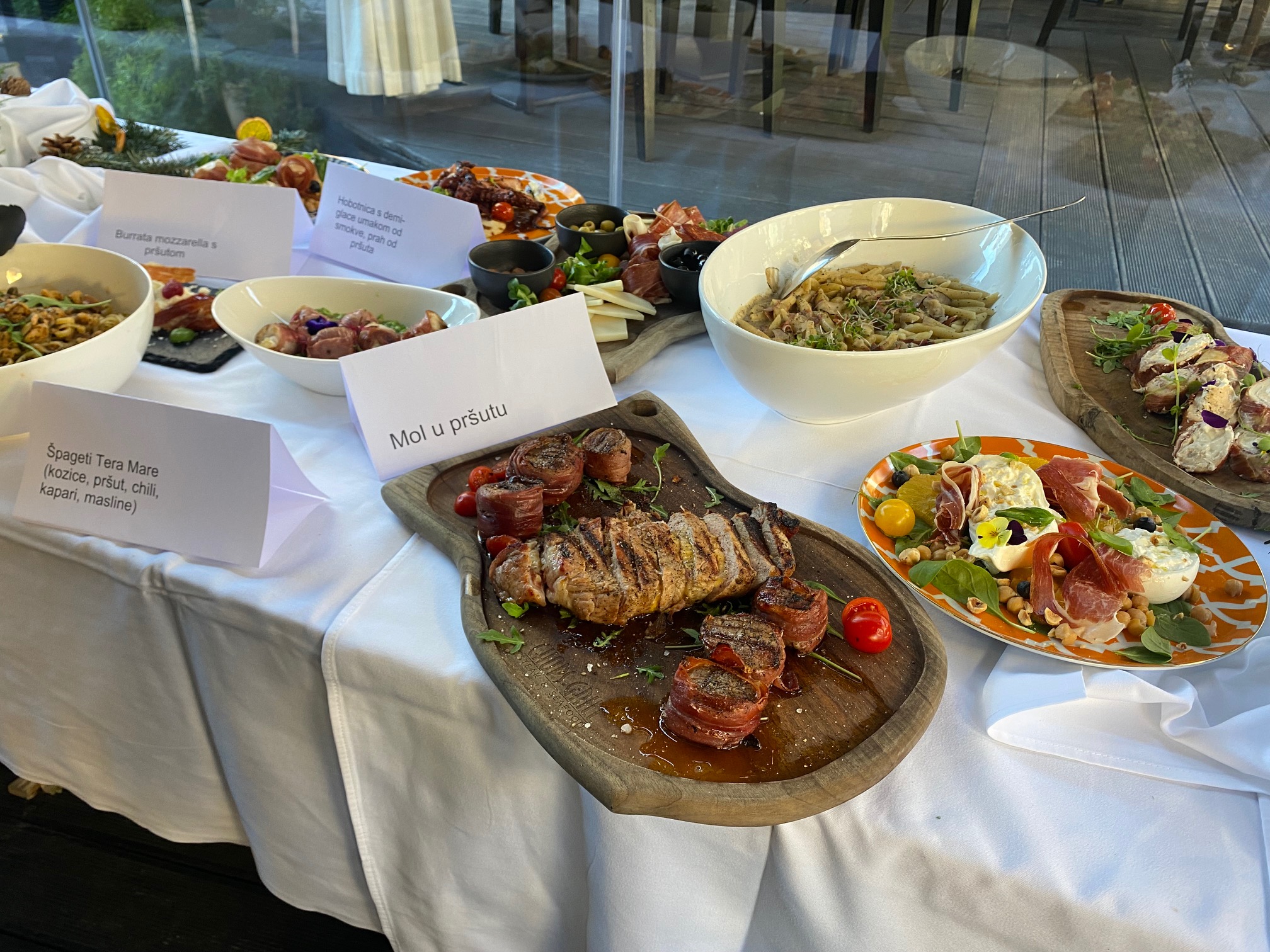
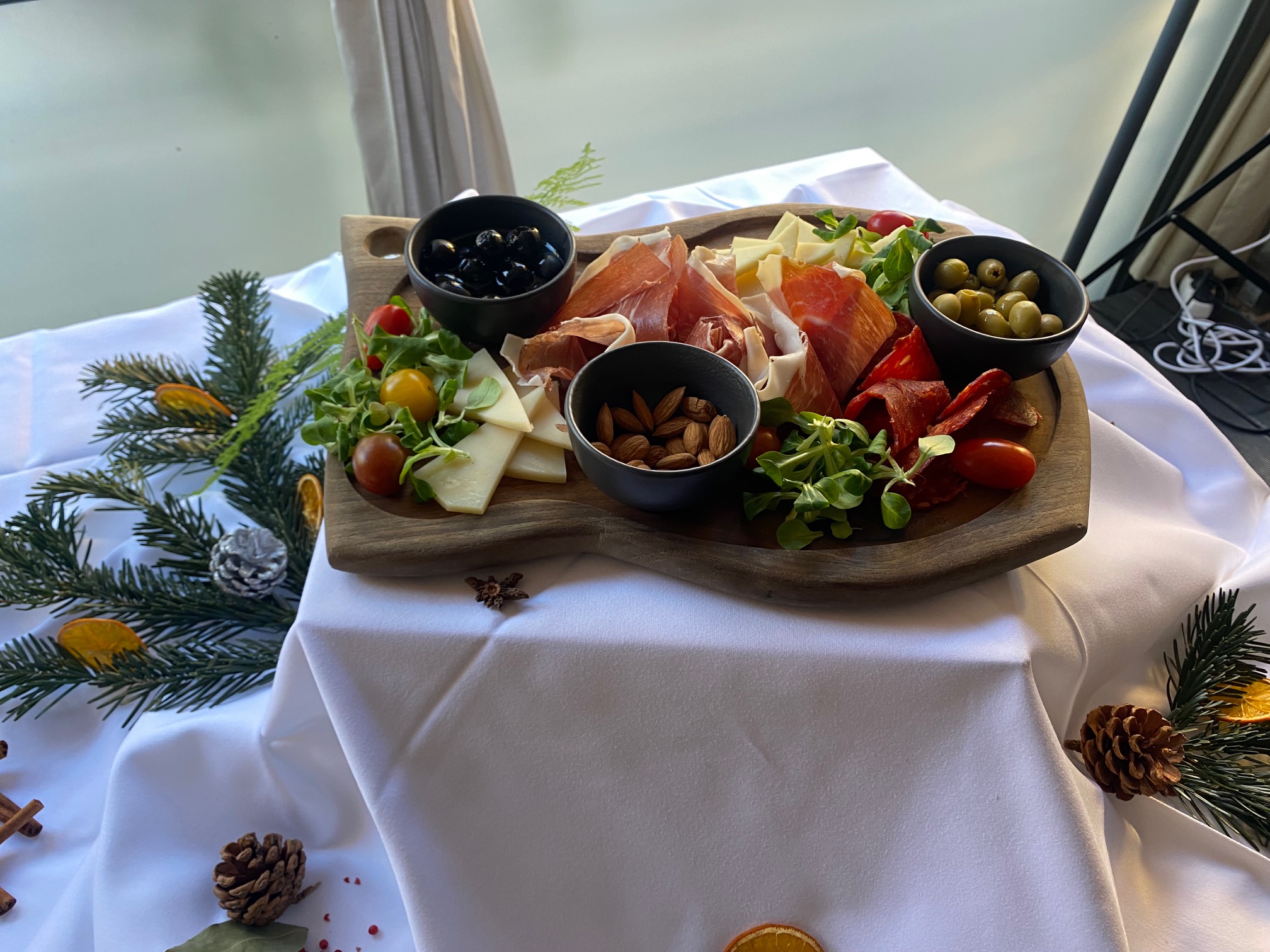
And for dessert, chocolate cake and grandma's cake with raspberries and almonds, to name a few.
Rizman wine accompanied the delicious dishes. The philosophy of the Rizman winery is based on a long viticultural tradition and an ecological approach in the vineyard and cellar.
"With this ecological certificate, we give legitimacy to the original and autochthonous thing we strive for. Ever since Rizman's great-grandfather, who was not driven away from the hearth by the downy mildew and who returned and replanted the vine in the Neretva Valley, we have been tirelessly telling the story of the harmony of man and nature, stone and vine.
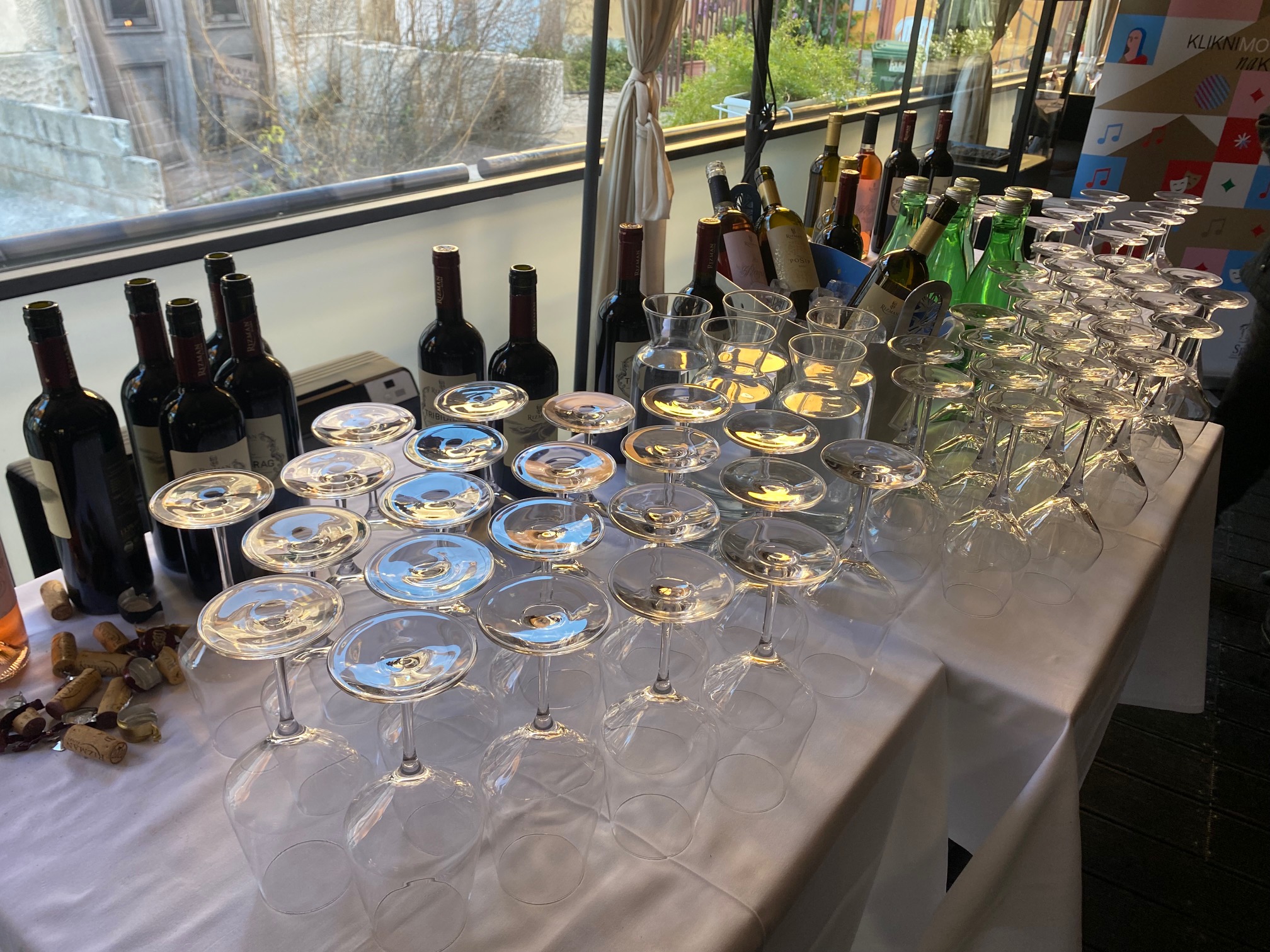
We are telling a story about sustainability, about the great potential of autochthonous Dalmatian and Croatian varieties, about our ecological vineyards from the youngest Croatian vineyard Komarna."
Split-Dalmatia County and the Split-Dalmatia County Tourist Board are avid supporters of Gastroadvent in Split, thus promoting the Mediterranean diet and local producers, entrepreneurs, and tourism workers.
The Split Tourist Board has worked hard to position the destination, harnessing a natural combination of history, gastronomy, and modernity, all to protect the components of the Mediterranean diet. The City of Split is determined to support projects that benefit its residents and demands guests after authentic experiences and new technological opportunities.
The Croatian Chamber of Commerce has advocated for years to encourage the representation of domestic products, and since 1997 has implemented the national project "Let's Buy Croatian." The project aims to increase the consumption of local products and thus support the economy. This project is of particular importance, emphasized by the director Joze Tomaš, and confirmed by the cooperation with Gastroadvent.
JU RERA S.D., as part of the MD.net project to establish innovative food products, has cooperated with primary and secondary schools in Split-Dalmatia County and stakeholders involved in producing or marketing Mediterranean food products and promoting the Mediterranean way of life. The MD.net project focuses on development opportunities and problem-solving related to popularizing the Mediterranean diet. The Mediterranean diet is a part of the Mediterranean identity inscribed in the UNESCO list of intangible cultural heritage. The project aims to strengthen research in this area following the UNESCO Convention on Mediterranean Nutrition, raise the quality of nutrition and life in 9 project partner countries, and promote the Mediterranean diet, which is recognized as the gold standard of proper nutrition with far-reaching health benefits.
Apart from the desire to involve as many people as possible and bring them closer to the importance of the Mediterranean diet in everyday life, as well as its impact on their health, the other goal of the project is to establish a standard in the Med Diet Declaration logo to classify Mediterranean areas. The ultimate goal of awarding the Declaration is to position Split-Dalmatia County as a desirable Mediterranean culinary region.
Split Gastroadvent is held every Advent Sunday at a new location, honoring a different group of journalists with new culinary creations at each event.
To read more about lifestyle in Croatia, follow TCN's dedicated page.
3rd Split Gastroadvent at Cornaro Hotel Honors TV Journalists and Romanian Specialities
December 12, 2021 - The third Split Gastroadvent at Cornaro Hotel honored TV journalists and Romanian cuisine, attended by representatives of the city and tourism, along with project partners.
Gastroadvent is a unique event that has promoted the Mediterranean diet for decades through a fusion of nutrition, gastronomy, and tourism. Thanks to the engagement and participation of dedicated journalists, who continue to bring light to Split, the event persistently shares scientific knowledge woven into gastronomic skills, the numerous health benefits of the Mediterranean diet, and the preparation of dishes from unique ingredients.
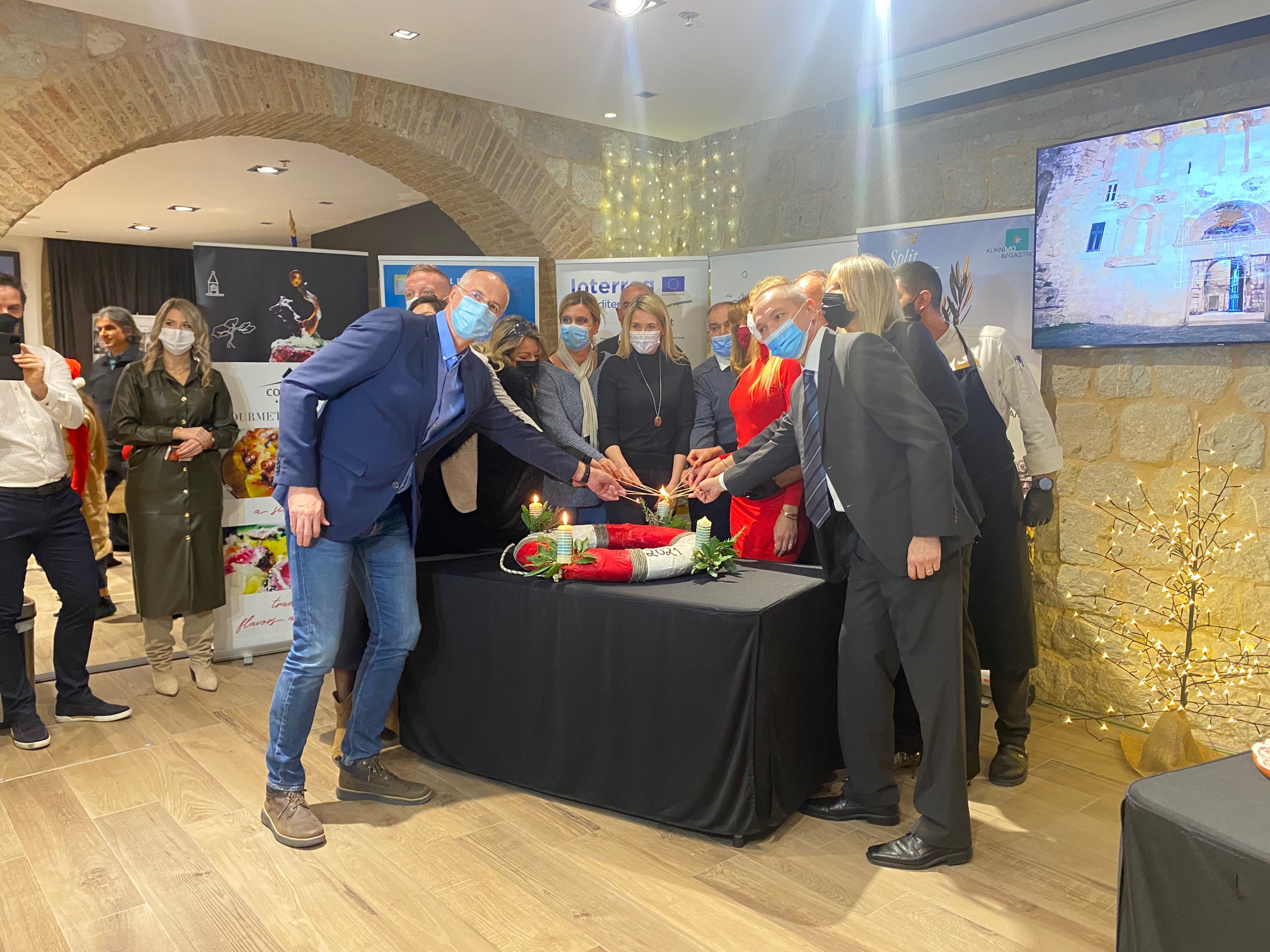
The theme of this year's Gastroadvent is "Mediterranean nutrition is sustainable, achievable, and responsible." In its original form, the stated principle is the basis of action and, as such, should remain the foundation of behavior. The Mediterranean Sea connects all the countries founded on the Mediterranean diet. For the Mediterranean diet to be sustainable, we must responsibly dispose of our waste and use resources rationally.
The holiday season is a time to imbibe and socialize with family and friends, which is why both Dalmatian and Romanian holiday delicacies were in the spotlight at the lighting of the third Advent candle. Romania was honored at today's Gastroadvent thanks to Stjepan Roglić, Honorary Consul of Romania in Split.
The most delicious prosciutto is produced in the Mediterranean region. Resources are used rationally, especially the sea and the bura wind, to obtain a dried ham product. The first recorded mention of prosciutto dates back to 100 BC and is preserved in the Italian city of Parma. And they, just like us, have kept the tradition of producing prosciutto all these years.
But this is more than just a 2,000-year-long tradition. In addition to gastronomic quality, it is essential to know the nutritional facts of prosciutto.
The tradition of Croatian production has been preserved in Hrvace for decades. The Lovrić family researched and produced traditional meat products in the 1980s when every MEL product was created thanks to hard work. The company's wide range includes products made from fresh meat (beef, pork, veal, lamb) and products that bear the "Originally Croatian" and "Croatian Quality" labels. The company MEL-JAKOV LOVRIĆ distributes its products to stores and also supplies restaurants and hotels. MEL products represent the tradition of excellence and the best Dalmatian taste. Alkar salami is their jewel among the products.
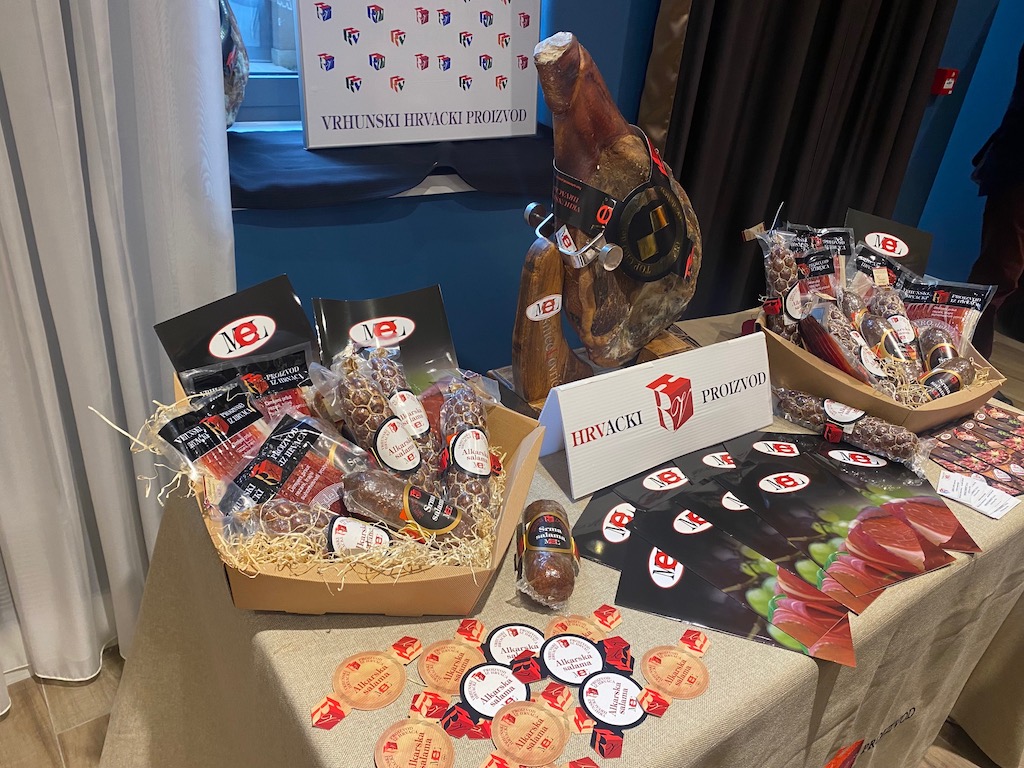
The sumptuous culinary table was designed and prepared by chef Duje Terze (Hotel Cornaro) and his team, paired with Nikolica winery's top-quality 2019 Dingač and Postup, made by the Radović family, Cornaro Hotel owners.
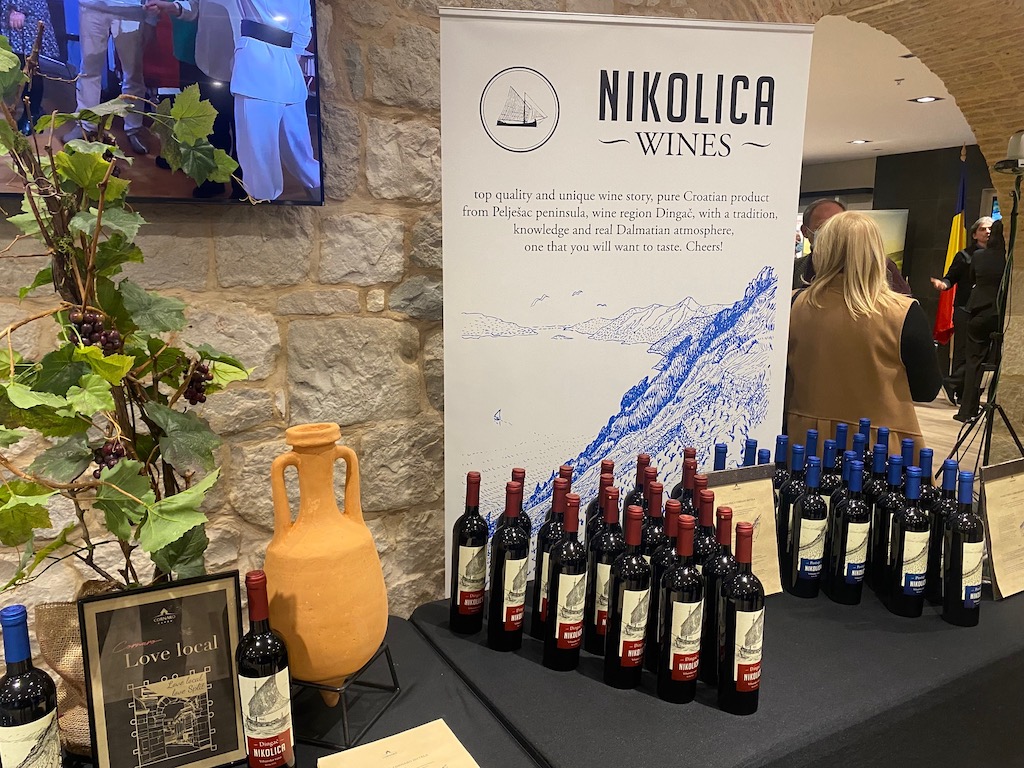
Today's menu included Dalmatian prosciutto with sweet and savory tapenade and skuta, a selection of quality Dalmatian cheeses, chickpea and prosciutto spread, tapenade with olives and prosciutto, puff pastry and prosciutto, bruschetta with onion jam, skuta, and prosciutto, bruschetta with tuna pate, bruschetta with pear, gorgonzola and prosciutto, salty baskets with prosciutto, melon and prosciutto, cold cuts, a selection of quality Dalmatian cheeses, goat cheese and prosciutto tart, Vis pie, foccacia with olives, tomatoes, herbs, bakalar, monkfish fillet wrapped in prosciutto, octopus with prosciutto and chickpeas, homemade gnocchi with prosciutto and sage, tagliatelle with shrimp and prosciutto, veal breast stuffed with prosciutto and leeks, prosciutto,cold salad, French salad, caprese salad, octopus salad, and rožada, Split cake, and fritters for dessert.

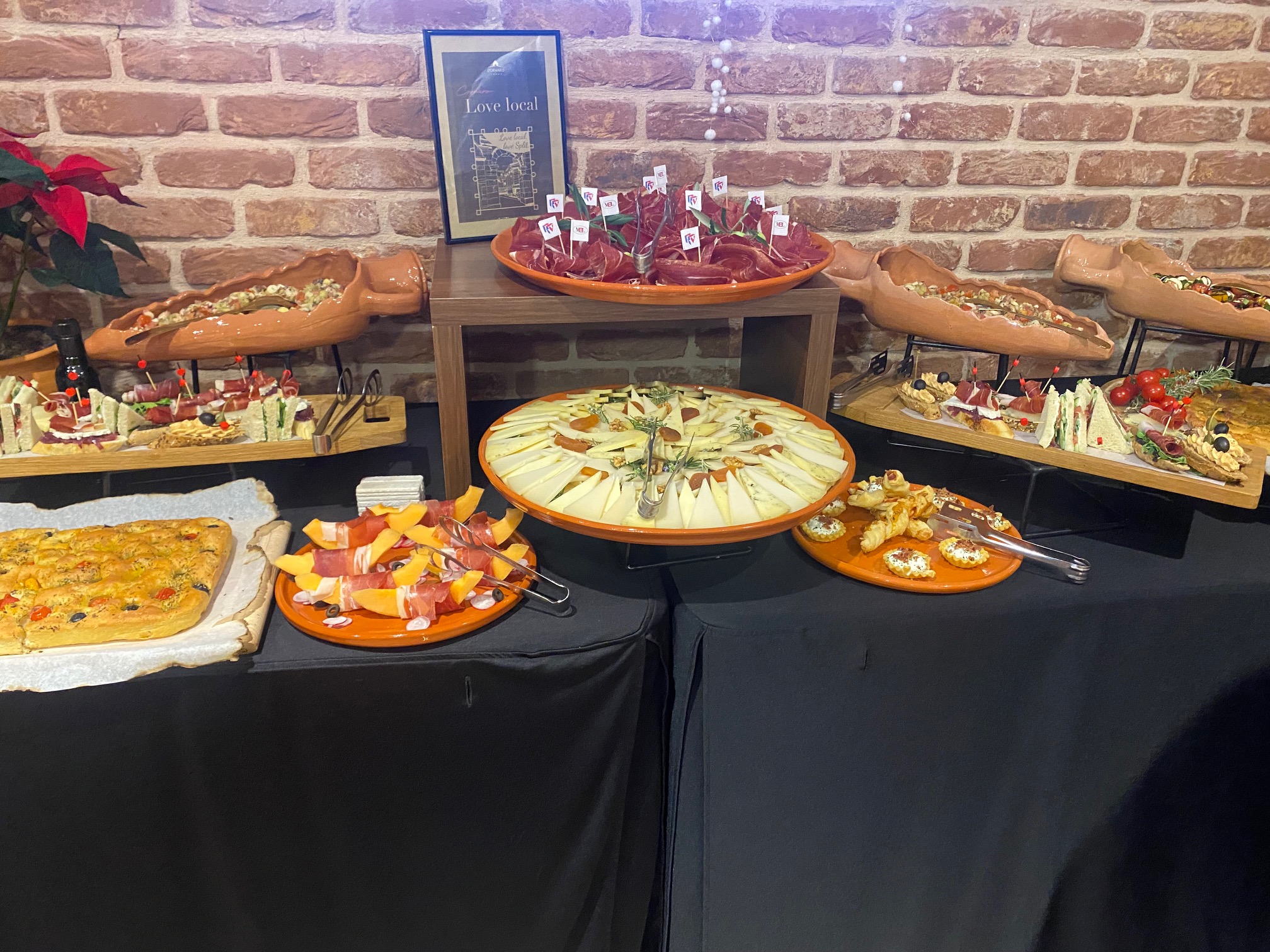
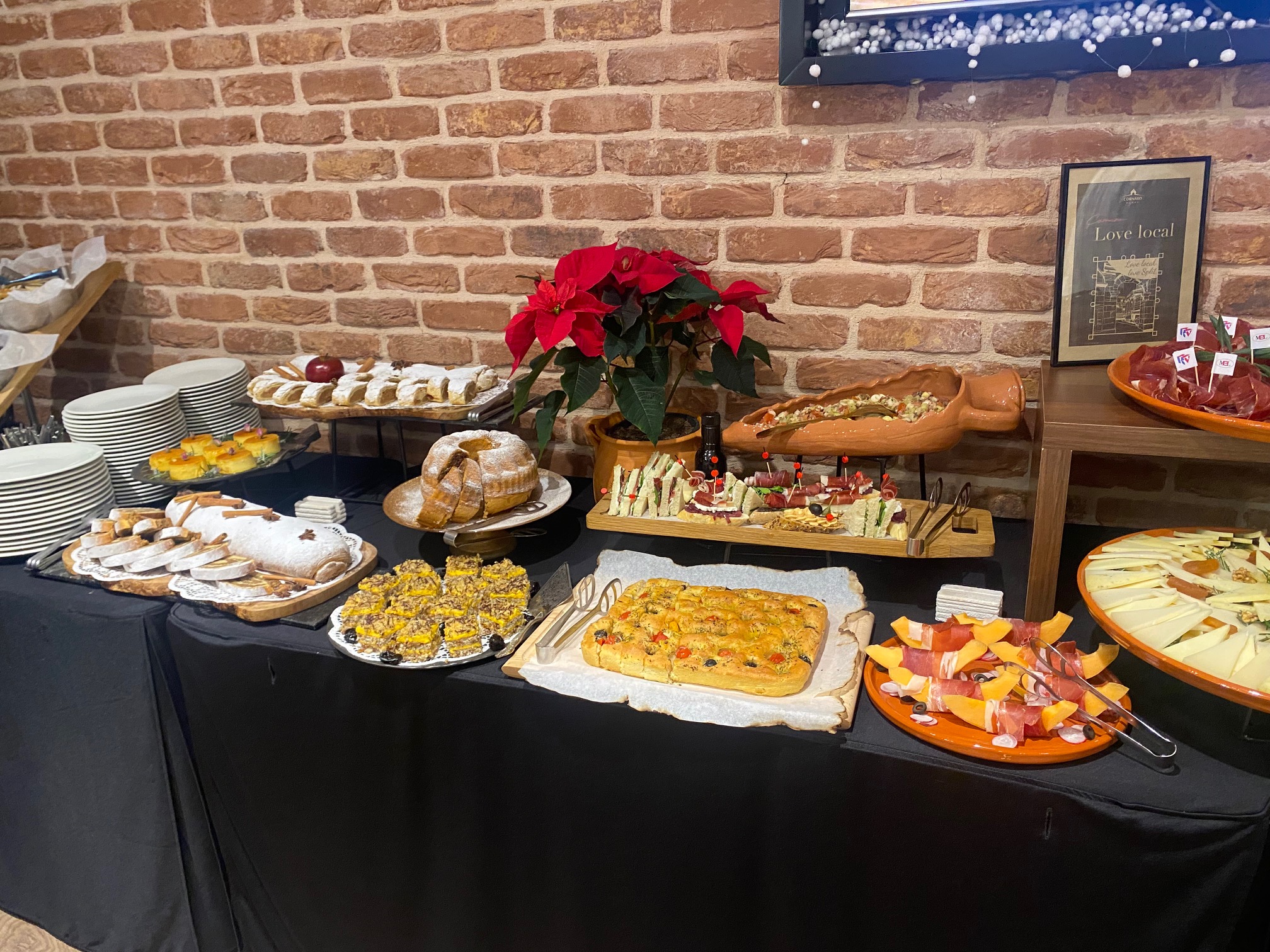

The Romanian food table was presented by Frane Ivan from the Community of Croats in Romania and included mature sheep cheese, cold plates of dried meat products with pickled vegetables, fish caviar spread, traditional vegetable spread, mushroom spread, Christmas cake, sweet quince dessert, salty pretzels, and ROM chocolates and Puffs as gifts for guests to take home!
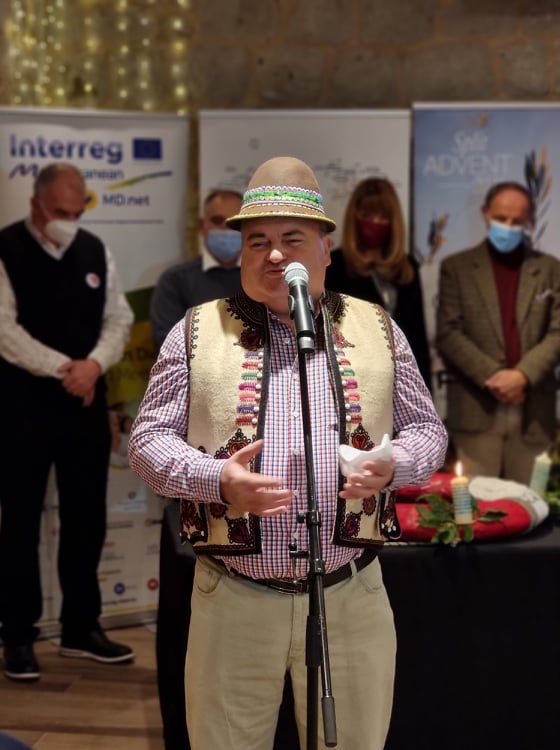
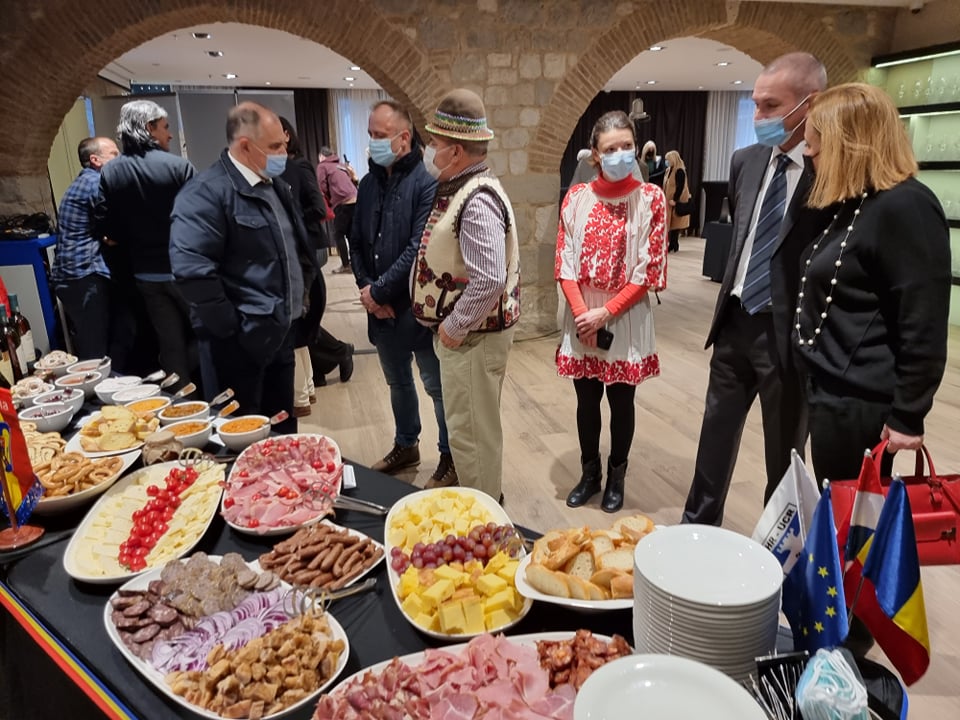

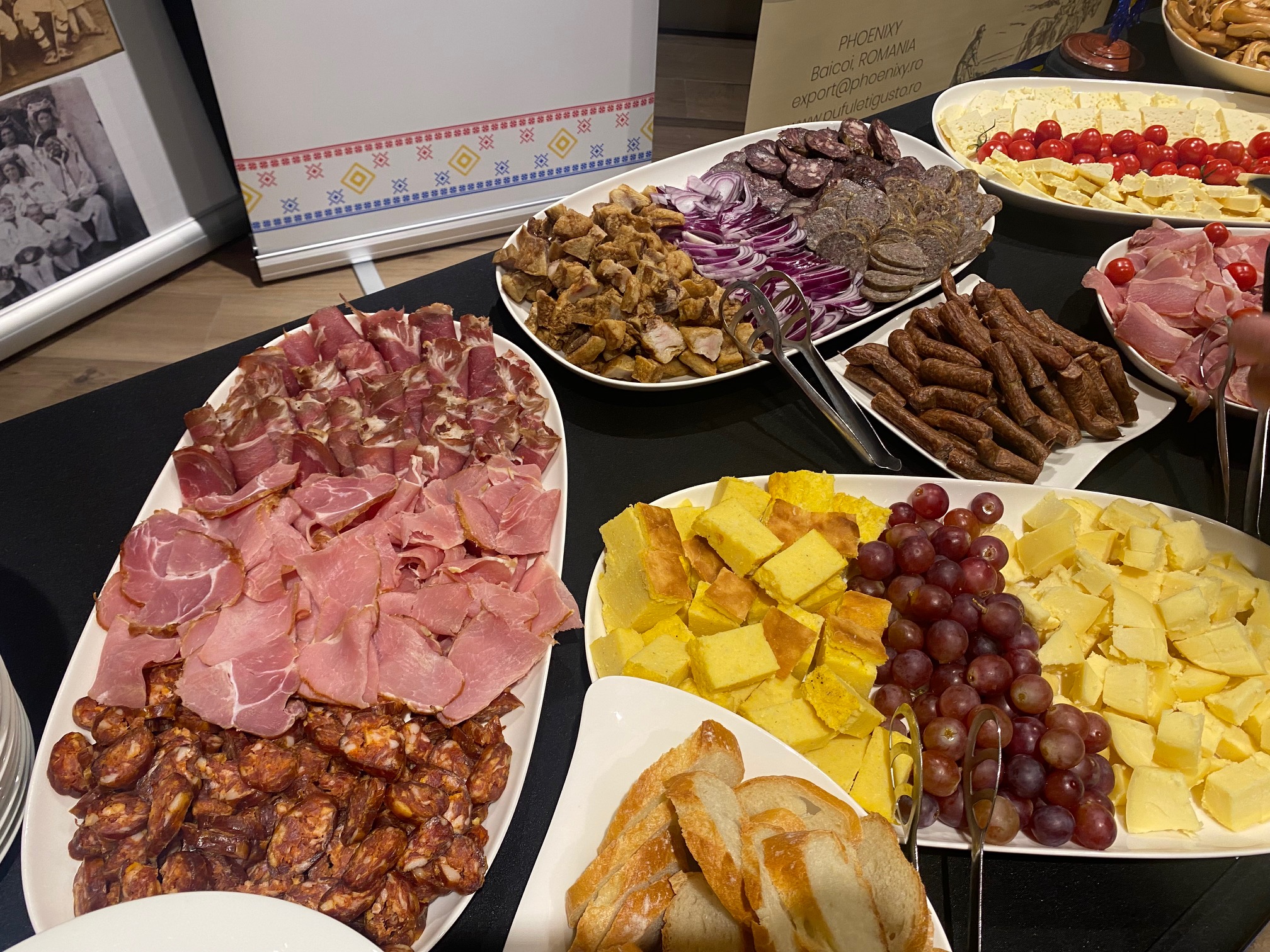
Split-Dalmatia County and the Split-Dalmatia County Tourist Board are avid supporters of Gastroadvent in Split, thus promoting the Mediterranean diet and local producers, entrepreneurs, and tourism workers.
The Split Tourist Board has worked hard to position the destination, harnessing a natural combination of history, gastronomy, and modernity, all to protect the components of the Mediterranean diet. The City of Split is determined to support projects that benefit its residents and demands guests after authentic experiences and new technological opportunities.
The Croatian Chamber of Commerce has advocated for years to encourage the representation of domestic products, and since 1997 has implemented the national project "Let's Buy Croatian." The project aims to increase the consumption of local products and thus support the economy. This project is of particular importance, emphasized by the director Joze Tomaš, and confirmed by the cooperation with Gastroadvent.
JU RERA S.D., as part of the MD.net project to establish innovative food products, has cooperated with primary and secondary schools in Split-Dalmatia County and stakeholders involved in producing or marketing Mediterranean food products and promoting the Mediterranean way of life. The MD.net project focuses on development opportunities and problem-solving related to popularizing the Mediterranean diet. The Mediterranean diet is a part of the Mediterranean identity inscribed in the UNESCO list of intangible cultural heritage. The project aims to strengthen research in this area following the UNESCO Convention on Mediterranean Nutrition, raise the quality of nutrition and life in 9 project partner countries, and promote the Mediterranean diet, which is recognized as the gold standard of proper nutrition with far-reaching health benefits.
Apart from the desire to involve as many people as possible and bring them closer to the importance of the Mediterranean diet in everyday life, as well as its impact on their health, the other goal of the project is to establish a standard in the Med Diet Declaration logo to classify Mediterranean areas. The ultimate goal of awarding the Declaration is to position Split-Dalmatia County as a desirable Mediterranean culinary region.
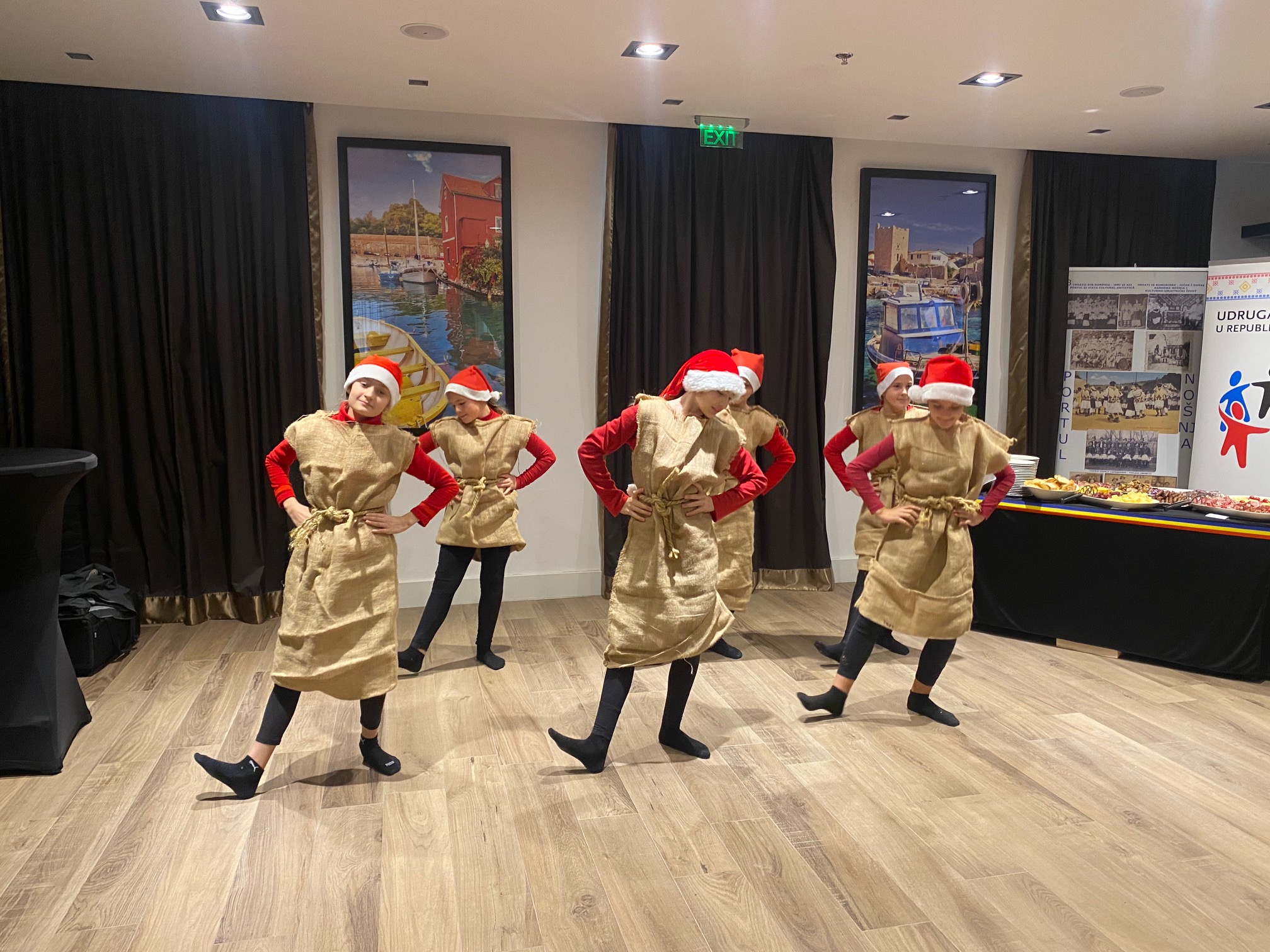
This Sunday's Gastroadvent was enhanced by Dance Studio "Dimache" under the direction and choreography of Remus Dimache, ballet soloist of the Croatian National Theater in Split. For this occasion, Remus Dimache added elements of Romanian folklore to the choreography of modern dance.
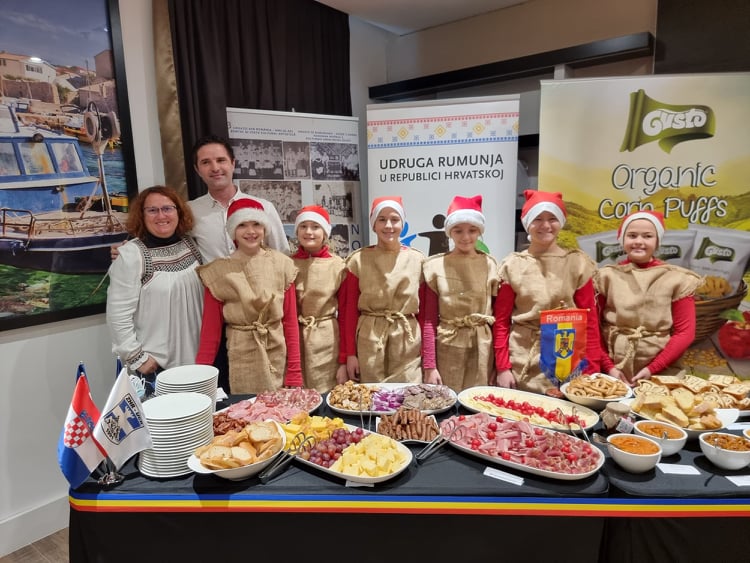
The designer of this year's Gastroadvent wreath is artist Tonka Alujević, who depicted the Advent wreath from a lifebuoy as "a maritime object that serves to save a man who, for various reasons, is helpless in the sea and is in mortal danger." And that is precisely the health and political position we are in at the moment.
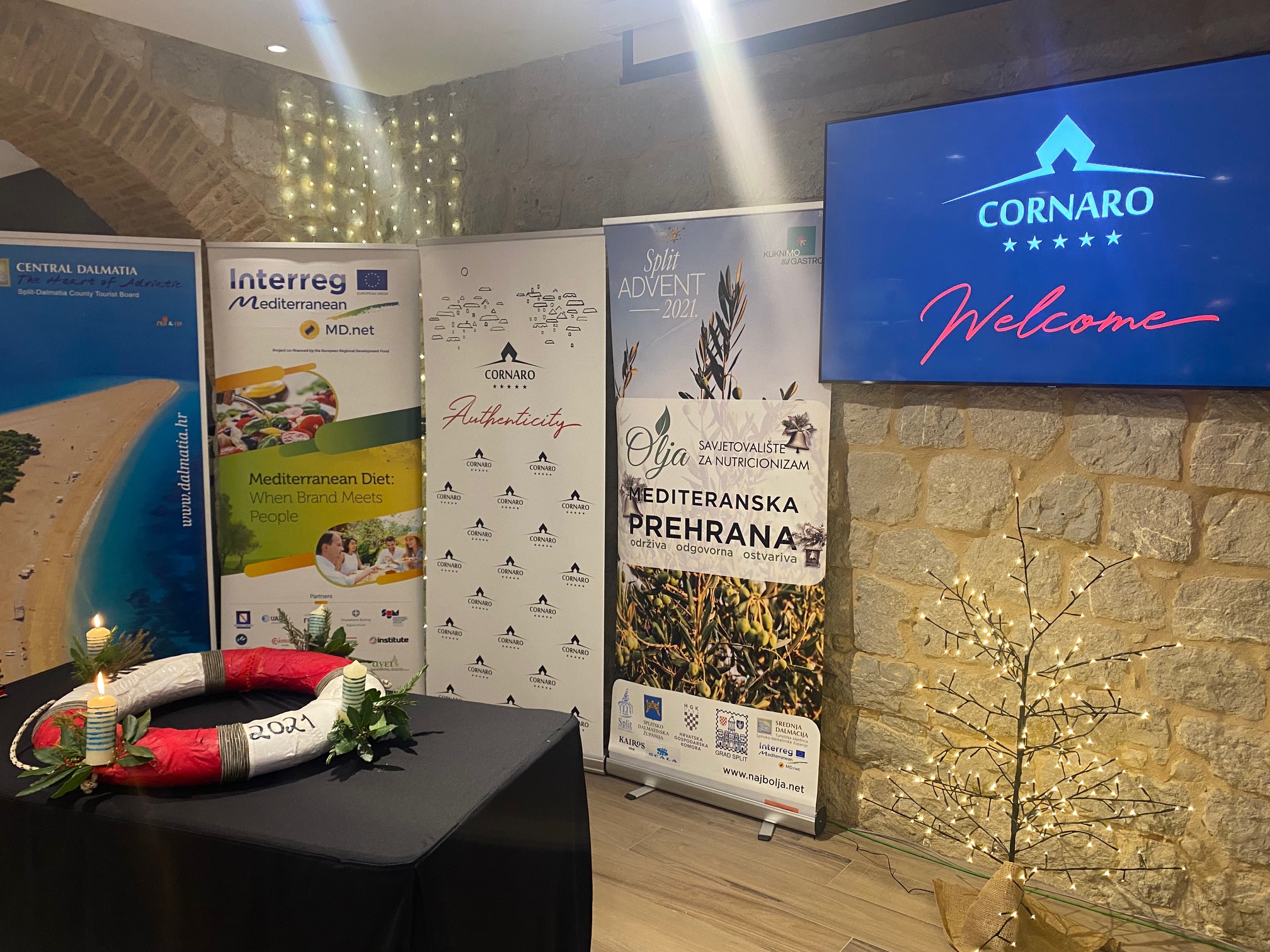
Split Gastroadvent is held every Advent Sunday at a new location, honoring a different group of journalists with new culinary creations at each event.
To read more about lifestyle in Croatia, follow TCN's dedicated page.
Zvončac Advent Festive Train Announced from Sv. Frane in Split!
December 7, 2021 - Advent in Split is even richer this year - ride to Zvončac Advent in style with a festive train from Sv. Frane every day!
'Click on Advent' is the theme of this year's Split Advent, so visitors near and far can 'click' on gastronomy, culture, and games thanks to a new website, ensuring Split's festive season is never too away.
A handful of exciting events will be held this year in various micro-locations around the city, including the Cornaro ramparts, Perivoj, Imaginarium Advent Zvončac, and Mertojak.
One of the most interesting locations this year is Imaginarium Advent at Zvončac Park, which opened its program with the Split Majorettes, Alen Islamović & Thrill Band last week. In addition to a packed concert program, UJE oil bar, Bajamonti Pizza, Steak & Fish House, Konoba Lanterna Siber, Mazzgoon, Charlie's Bar, Moby Dick, Caffe Bar - Bistro NoStress, BEPA, and ZINNY are providing tasty culinary creations to enhance the Advent atmosphere at their holiday houses.
The organizers announced a colorful concert program as well, with Petar Dragojević playing on his uncle Oliver's birthday (December 7), Gustafi, and Split favorite TBF to ring in the new year.
But that's not all.
If you were worried about how you'd get to Zvončac, fret not - an Advent train will depart from Sv. Frane to Zvončac every day! The train costs 5 kuna per passenger and will work on Monday to Friday from 5 pm to 10 pm, and on Saturday and Sunday from 12 pm to 10 pm.
Admission is free to Zvončac Advent and Covid certificates are required for the evening part of the program, which begins at 7 pm. For those who do not have a Covid certificate, testing is available at the entrance for 50 kuna.
You can find the full program at: https://advent.imaginarium.hr
Advent Zvončac is organized by Imaginarium Events & Weddings with Radio Dalmacija as the media sponsor. Other sponsors are the Croatian National Theater in Split, President Hotels, and the Split Tourist Board.
To read more about lifestyle in Croatia, follow TCN's dedicated page.
Split Winter Tourism at Chops Grill: Chopsylicious Menu, Weekend Music, Christmas Flair
November 15, 2021 - Is Split winter tourism that hard to achieve? Croatia's second-largest city and the star of summer loses its buzz as soon as the seasons change. But it doesn't have to be that way. Our new TCN series looks at the Split businesses working hard in winter to give locals, and visitors, the environment they deserve. Continuing this week with Split winter tourism at Chops Grill.
I was lucky to be introduced to Jasmina, the owner of Chops Grill, in my early days with TCN. That is something I am grateful for to this day. Not only is Chops one of Split's best restaurants, maintaining quality and culinary consistency year-round, but Jasmina and I have built a wonderful relationship over the years - and she continues to inspire me season after season.
Chops Grill is not your typical Split restaurant, but a superb steakhouse that rewards guests with the best cuts of meat, American influences, and, of course, a Dalmatian touch. Jasmina and Chops also know no season and are applauded for working tirelessly year-round, adapting their offer depending on the time of year, from unique 3-course menus to on-the-go breakfast sandwiches.
But what motivates Jasmina, Chops, and sister cafe bar Paradiso to bring the best to guests even in the winter?
Croatia and Split had booming year-round tourism in the 1980s until the outbreak of the Homeland War, but now the Dalmatian coast sleeps through the winter. Why do you think that is?
First of all, I think we were a more affordable destination at that time. I know this because when I worked for Sunčani Hvar back in 2006, we had half-board offers that were very cheap per person through agencies.
There also aren't as many big tour operators today. Everything is done online. Tourists do their own research and don't need agencies or operators as much.
And because nothing is state-owned, the prices are much higher, even in the winter.
Back in the 1980s, many hotels offered health tourism, spas, and indoor pools, allowing older travelers to visit here even when the weather wasn't as nice. Today, we mainly have city hotels that do not have spas or facilities to accommodate winter tourism.
If flights were not the problem, does Split have a winter tourism offer, and if yes, what is it?
I feel bad for tourists that visit Split in the winter, especially now. The only real options are for visitors to have dinner then drinks in a half-empty bar. Guests ask us what they should do after dinner, and we honestly don't know what to tell them.
The museums here are great and interesting for Croatian schoolkids needing to learn about the history of Croatia, but for international tourists, and even if I was a tourist here, there are no interactive museums where you could spend the day. When it comes to culture, we are also lacking in offering shows. HNK is amazing, but the program is mainly in Croatian, which doesn't tempt tourists - especially when musicals or drama plays are in focus.

If I am on a city-break getaway with my husband, I would also want to go shopping, which is a huge problem here. My guests often ask where they can buy certain designer items. The people that come here are minimum middle to upper-class guests. They pay big money for their hotel room - around 300-400 euros. Most people on city-break trips travel without their kids - usually with their significant other or friends. This then targets travelers who want to go to a nice show, dinner, enjoy good cocktails, and maybe explore a museum. But they will also want to go shopping, and there isn't a designer shopping offer in Split. This is a problem we need to start addressing now. The wealthy Russian tourist cannot buy their Chanel in Split but can elsewhere. They could go to Montenegro instead.
Istria already has a winter tourism offer, but Inland Dalmatia is not yet as developed. If you're coming to Split for 3-4 days, wouldn't you want to spend one day in nature with a local family that will serve you their homemade wines and products? Especially somewhere that is only a taxi ride away from Split? There are few places you can send tourists for that experience, and we see a lot of interest around this idea from our guests at Chops. We already have beautiful villas with pools in Imotski, but a nice family farm or winery where you can spend the day? Our current offer mainly targets Croatian families for a Sunday lunch. It's not a Michelin-star experience, but it's an authentic and local experience, and tourists would love it, too.
Are you aware of any initiatives to improve the winter tourism situation?
Only Paul and Total Croatia News, haha. I've been part of the tourism industry for a long time, and I don't know of anything happening at the moment. Oh, but I do know that the Mall of Split bus is running from the ferry port!
Give us a few quick wins that could make Split a bit more attractive in the winter months?
Shopping, winery day trips from Split, contemporary/interactive art and museums, and shows. This is what I believe is most important for Split to offer in the winter. There also are not many destinations that offer both the beach and city-break getaways. Maybe Nice and Cannes if we are talking about cities comparable to Split. But what do they have? Shopping, art, and beautiful restaurants - but why? Because they have yachts. They have a similar climate, but it is not swimmable in the winter there either. Yacht owners, however, keep their yachts there in the winter. They check up on them and maintain them in the offseason. They know that bars and restaurants are open and that they can shop. Montenegro is starting to do the same thing. We have a lot of regular guests at Chops that live abroad but keep their yachts here in the winter, but what can we offer them? We also have an advantage compared to similar cities because these guests can easily fly into Split Airport, check on their yacht, and spend 2-3 days in Split. We need this tourism.
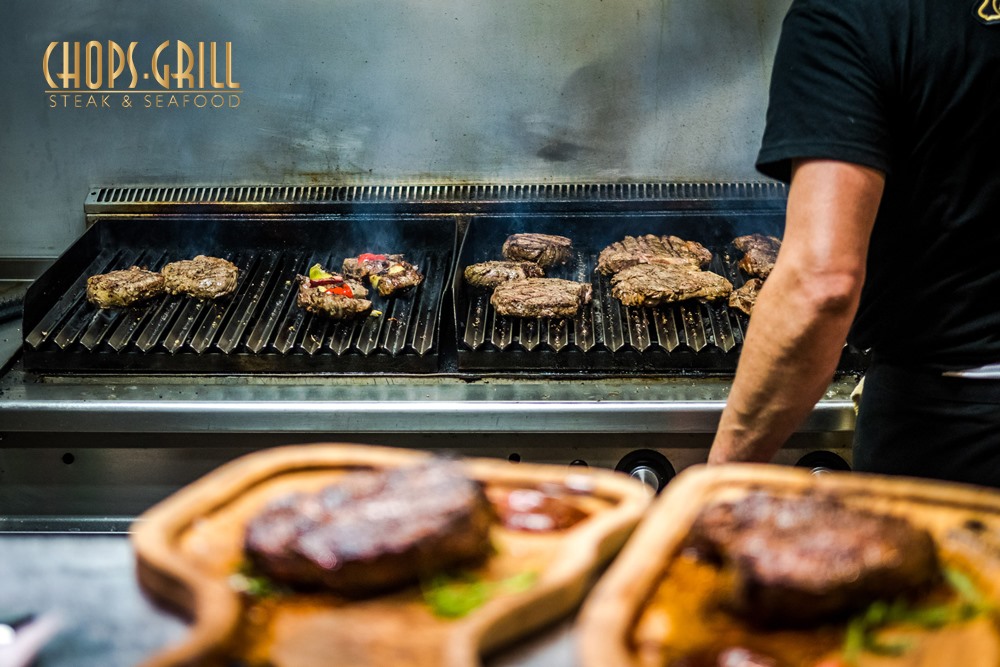
Are you planning an event(s) of your own soon?
On Saturday night we had a lot of reservations, due mainly to our Chopsylicious menu, which we have been doing for the last 7 years! Once we announced it this year, the interest was crazy. Everybody wants to try the menu, which is an excellent value for money. Diners can taste some of our products during the winter when they have more time. We have adjusted the menu to the season. For example, we are not selling the wagyu for 200 kuna. Instead, we changed the menu and are using it to test new dishes for next year. We are tracking what guests like and improving what is needed. When next season comes, we can introduce it to our menu. It's a win-win situation. And guests who like the Chopsylicious menu revisit us in the summer or recommend us to friends and family!
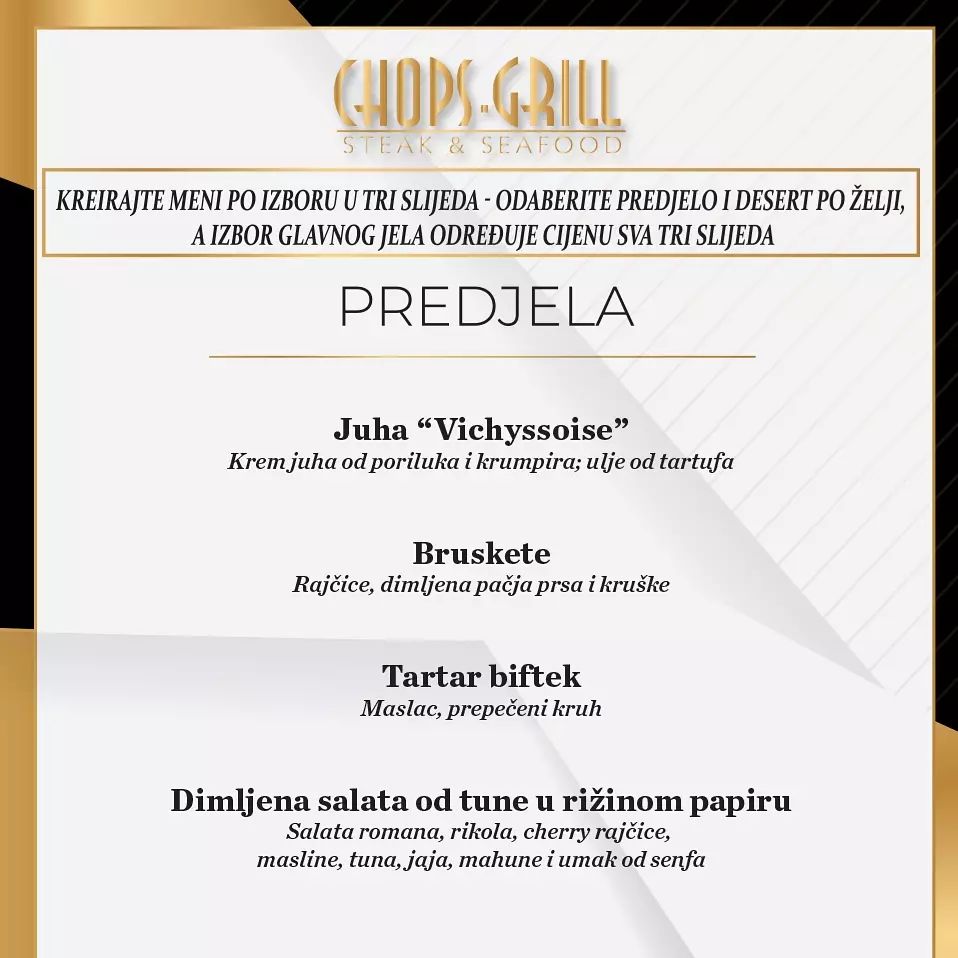
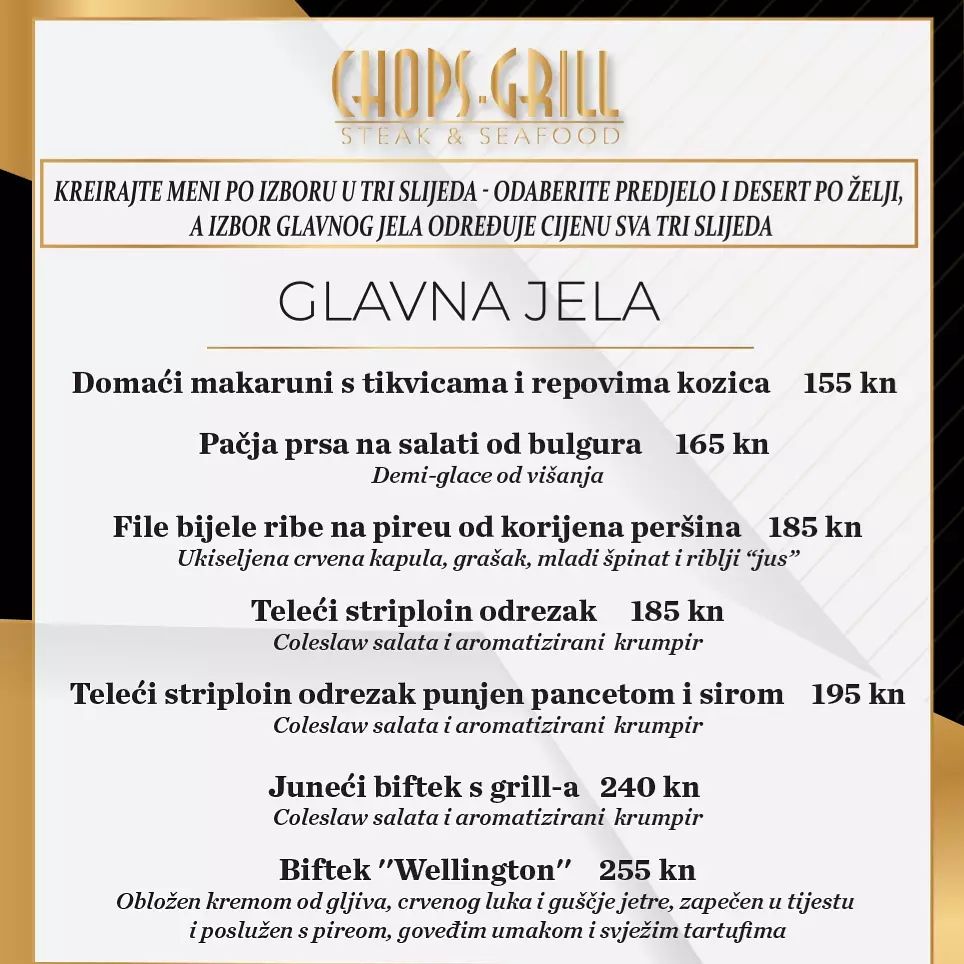
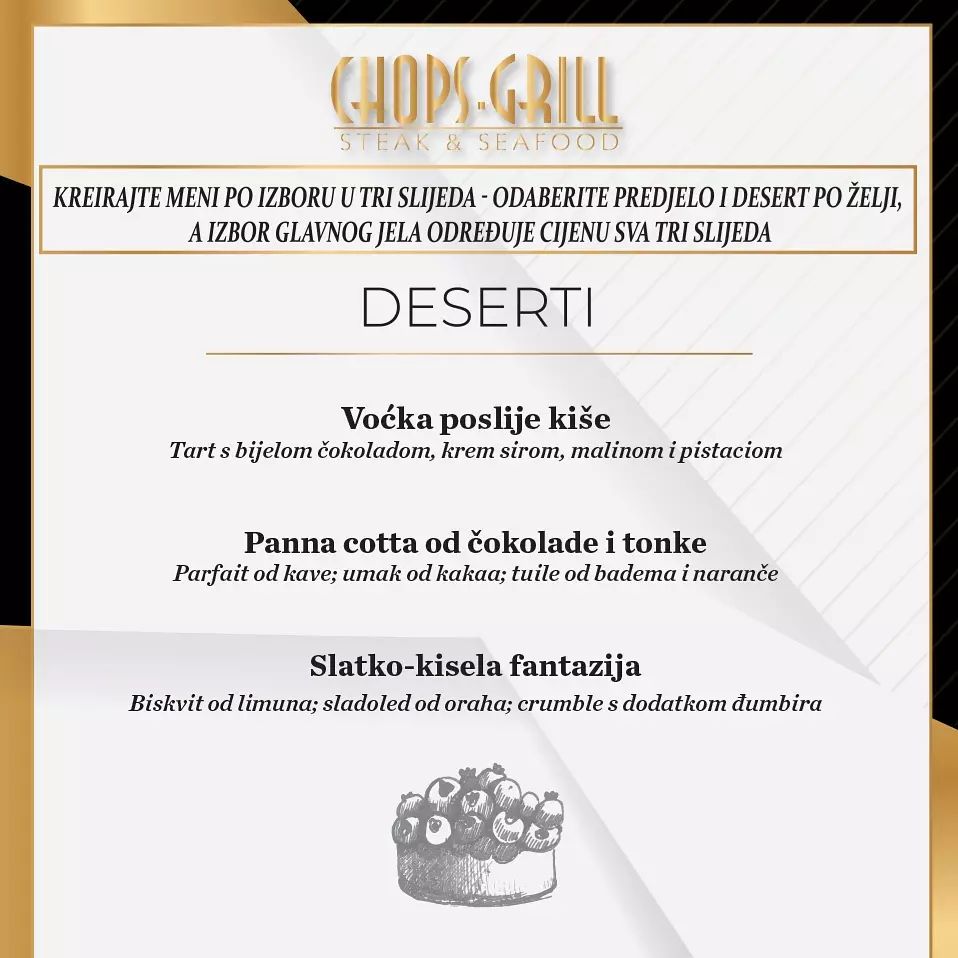
Besides Chopsylicious, we host two music professors from the Josip Hatze school who play inside the restaurant every weekend. Paradiso will be bringing in some light live music from next weekend, and we will begin decorating for Christmas as part of our winter wonderland. We have done it already for two years, and it's beautiful. This year we are going the extra mile to create a Christmas village. We will once again offer our breakfast sandwiches at Chops and Paradiso, so people will always have a place to eat and drink.
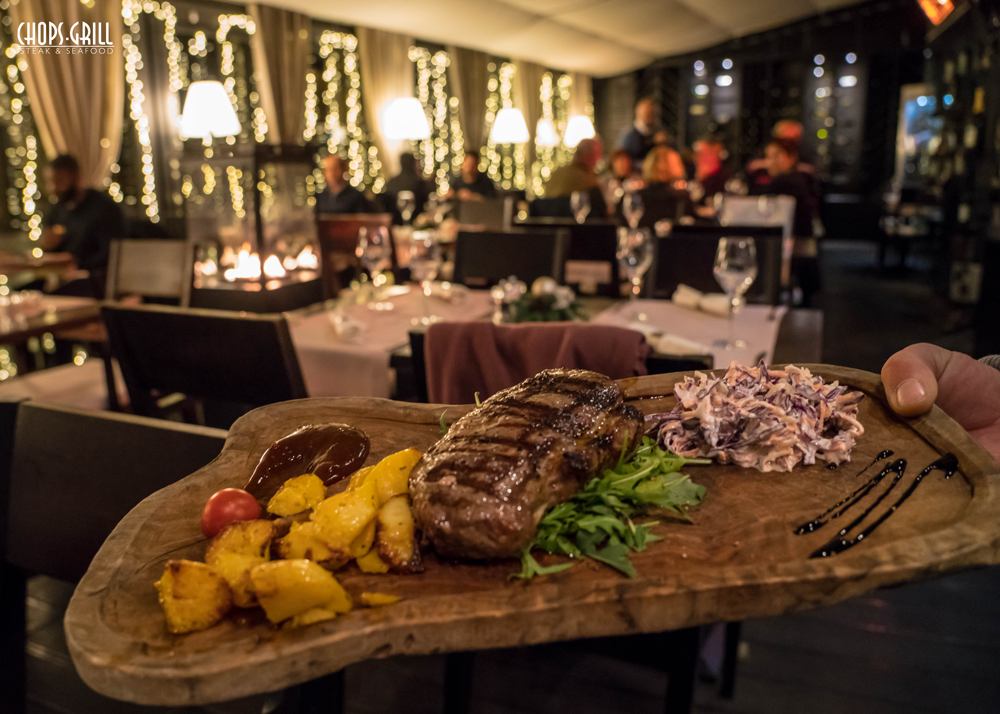
Will you close at all this year?
We always close from January 6 to March 1. It gives us a small break, but we also need to use the time to prepare for the season with renovations. We cannot preserve everything and need to repaint, repair the chairs, and the like. We also use this time to create the menu.
Back in 2020, we had plans to keep Chops open year-round. But, of course, the pandemic happened instead. That remains our ultimate goal, and I don't think we would have much trouble doing business even in January and February.
When winter tourism is mentioned, many locals say that they do not want it, as they are tired after the busy season. What is your perspective as a successful business owner?
We want it! We do need a break; everyone needs a break. I know I do because I have never worked harder on the operational side of things than this summer. But I only need about 15 days. I get nervous after that, haha. I need to do something actively; I cannot just twiddle my thumbs at home and not work because we had a 'successful season'. The Chopsylicious menu and our winter offer keep us busy, and I am happy we have that.
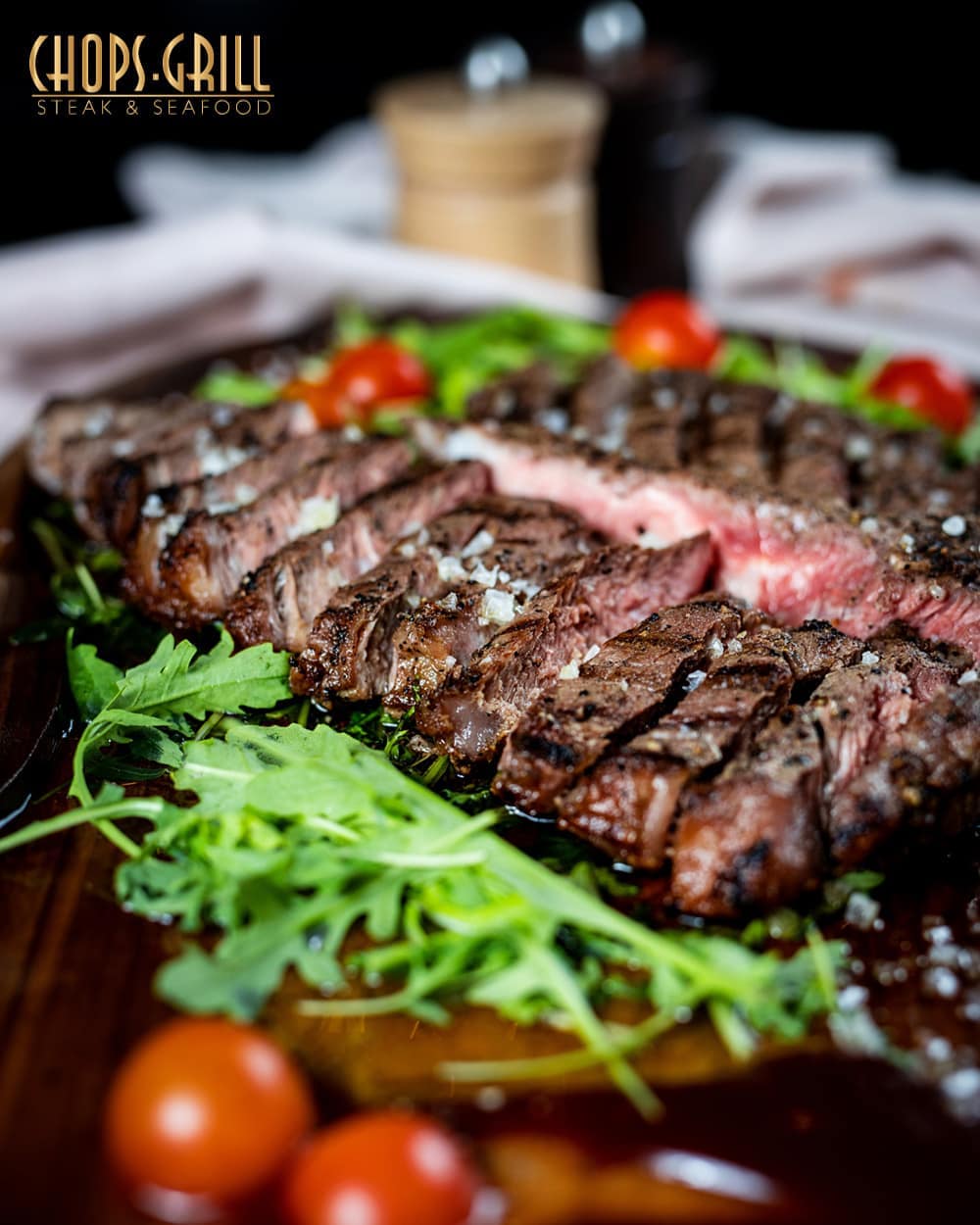
I would be terrified to close my doors for the entire winter. You cannot keep quality by doing that. Businesses that close in the winter also make the hospitality industry less desirable. It makes us a servant to our tourists. If you can work for an entire year, especially at a restaurant with a lot of business in the summer, and have good business throughout the winter with a year-round salary, then being a waiter is a beautiful job where you can support your family. Who wants to be a waiter only for 4 months? Then it's just a student job.
We care about our suppliers a lot and try to find a lower-cost product in the winter than the premium products we offer in the summer. With our chefs and their innovation, we create affordable dishes that guests can enjoy in the offseason. For example, the tuna salad on the Chopsylicious menu uses lower-cost ingredients but looks beautiful. The most expensive part of that dish is that someone had to come up with it in their head. If I am looking at that as the owner, the cost of that dish is lower, but someone needs to think about how to create that using the products available. That is why I invest in my staff throughout the year, and that is how you can adapt your offer in the winter to make sense for your restaurant and your guests.
What are the key steps in your opinion to getting more flights in winter? (Optional)
The Marriott (which will open eventually), Le Meridien Lav, Radisson Blu, and Atrium offer over 1,000 hotel rooms combined. All of those hotels have a spa, which I've already mentioned is crucial for city-break destinations. That's about 2,000 potential guests per day, offered beautiful hotels, great service and food, and indoor pools. If they all got together and spoke to a low-cost carrier about offering and filling these 1,000 rooms, that's a solution. It could almost be some non-formal tour operator. Say, for example, you buy the flight from a low-cost carrier and are offered reasonable rates at these hotels. This is especially important on the weekends when there are no business people from Zagreb in Split. But I truly believe these hotels with indoor pools need to come together; that is the only way it will work. Think - 2,000 people per day is 14,000 potential tourists per week. Those guests will be able to visit the hotel spa and swim, have a nice dinner in town, go to a cocktail bar, and even go to Joker for shopping!
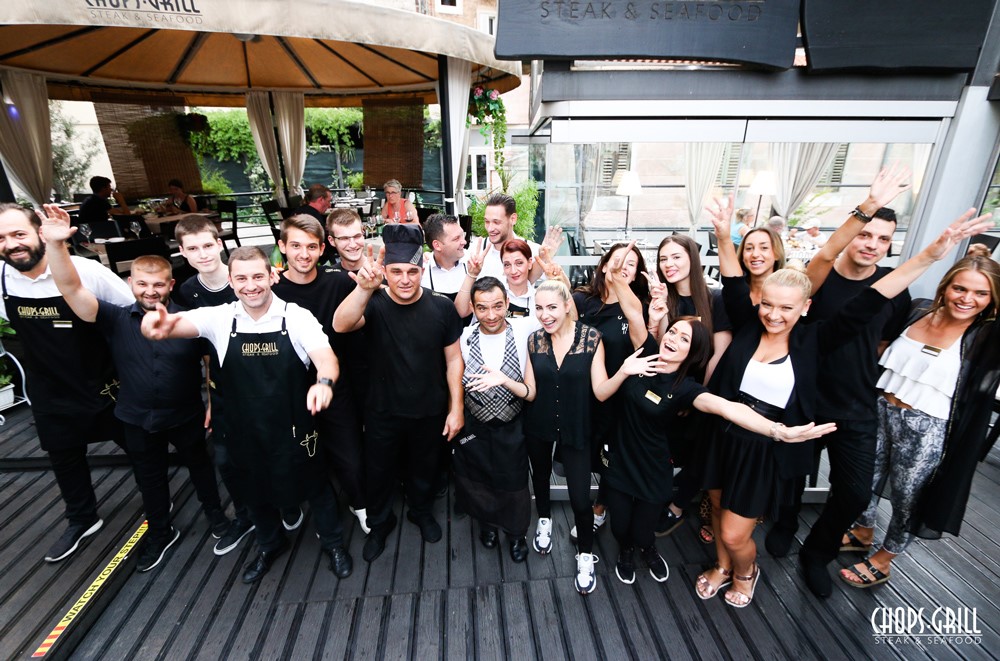
I would also try to create a promo video for tourists showing them exactly how their 4 days in Split would look, instead of just sharing Croatia's most beautiful destinations from above, usually without people. You could create a beautiful 'day-in-the-life' type of promo video showing exactly what you can expect on your Split trip. We need to show tourists what they can do here and not just share aerial footage.
Message to other businesses in Split?
If you stay open in winter, the summer will be easier since you can keep your staff. You'll offer better service, too. If you have both of those things, you'll earn even more money. And if we are all open during the winter, buying from our suppliers won't be as complicated!
Some businesses see each other as competition. If you have a city with many good restaurants, people visit for gastronomy, meaning they'll choose a new restaurant every day. Having more quality restaurants means more business for everyone. This would also help us to be recognized as an excellent gastronomic destination. We all need to support each other. Why can't other restaurants recreate the Chopsylicious idea? That is a wonderful idea, and it gives us more places to visit for dinner!
We also need to think about the minds of tourists and understand that they may not want to eat Dalmatian food every day of their trip. While local food should be enjoyed, it is impossible to expect that someone will eat grilled fish and blitva all the time. I know that when I am visiting Mexico, I cannot eat Mexican food every day. Sometimes you need a burger or pizza; comfort food that hits the spot and gives you a taste of home. And that is fine, too.
We offer eggs benedict on our breakfast menu and make the English muffins in-house because you cannot find them in Croatia. While we have to put in more work, knowing that our guests have that piece of familiarity is worth it. We also can't expect that every tourist likes eating fish or can peel scampi! A lot of these experiences may be new to them. That's why we should think about what tourists have available at home and try to recreate it in our way with traditional influences.
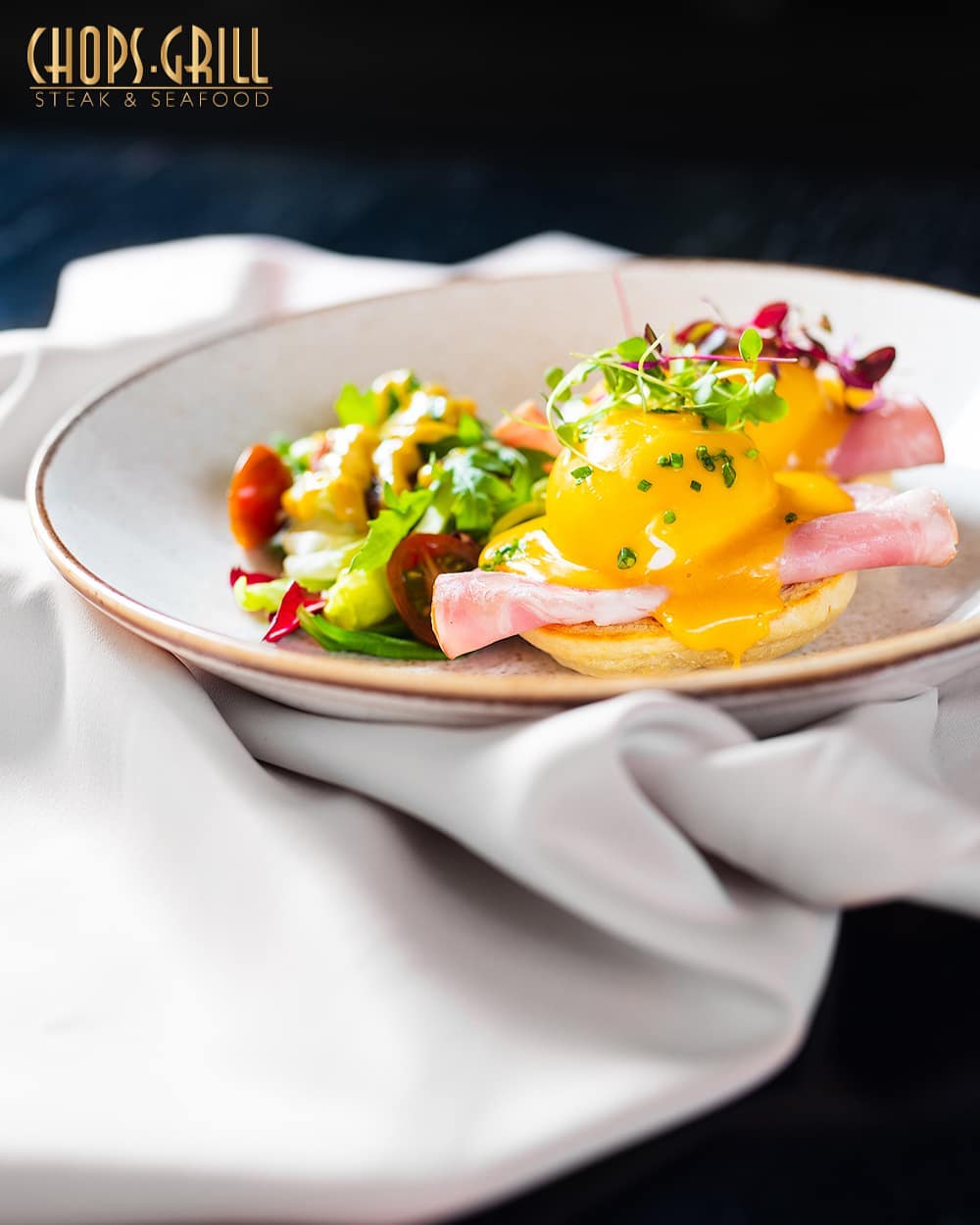
This is the direction we need to be going in. We should never lose our identity, but let's celebrate international cuisine with a Dalmatian twist.
You can explore Chops HERE.
If you are a business in Split with a winter program, please contact This email address is being protected from spambots. You need JavaScript enabled to view it. with the subject Split Winter Tourism.
Split Tourism 2021: Most Guests Expected from July, Over 2,700 Tourists in Split Currently
June 14, 2021 - There are just over 2,700 tourists in Split, though announcements of a promising summer are underway.
Slobodna Dalmacija reports that there are currently 2766 tourists in Split - mostly Croatians, followed by guests from the USA, Germany, France, and Poland, confirmed Alijana Vukšić, director of the Split Tourist Board, which clearly speaks of the current tourist picture in Croatia's second-largest city, which broke records until the coronavirus pandemic.
From the beginning of June until June 13, a little more than 26,000 tourist overnights have been realized, while the number of tourist nights in the same period last year was 5,800, and in 2019 a little more than 100,000, which the people of Split can now only dream of.
The Split Tourist Board director is optimistically looking forward.
"The interest in Split is growing day to day, which is confirmed by tourist traffic, and also the current announcements of travel agents, journalists, and tourists. We have a reason to be optimistic, and I believe there will be growth in tourist traffic in the following months. Still, we need to be very careful because the success of the tourist season depends on the responsible behavior of each individual," says Vukšić.
The current situation in Split in terms of tourist arrivals is not great, as evidenced by the announcements of numerous renters in various groups on social networks. They mostly complain about the lack of reservations. There are many empty apartments in the city center, those in great locations, beautifully decorated.
By reviewing the offer of accommodation on popular online platforms, it is easy to see how some renters struggle because their existence depends on renting or on credit. In despair, they began to significantly lower prices. Some stunning central apartments can be found for as little as fifty euros.
"According to people's reactions and available information, the pre-season was catastrophic in the case of those renters who previously had guests in that period. Only now, in mid-June, something similar is starting to happen that once took place in the pre-season - in Split, some reservations began to appear, and the first guests appeared. This is very weak, considering that our epidemiological situation is excellent and that we thought that our "last minute" would start at full speed. For now, the story is on the respirator, but for at least the last two weeks, the reservations have started to come to life, and there are no cancellations as before," notes Martina Nimac Kalcina, president of the Family Tourism Association of the Croatian Chamber of Commerce.
The first guests move into the apartments in Split almost shyly, but this is far from what the renters hoped for. Nimac Kalcina will say that the current situation in Split on this issue looks like the one that the people of Split used to have in April. And that means - there are some guests, but it's generally poor.
"Attractive apartments in the center of Split, even those with their own parking, are empty. In the last few days, their owners are asked to inquire daily, which usually ends with a reservation, but all this is too little, insignificant. These are apartments in Varoš, Get, Bačvice, Radunica, Spinut, which were once full throughout the summer. In addition, the prices of their rent have been lowered by about twenty percent compared to 2019, so again it is not going," says the president of the Croatian Chamber of Commerce Family Tourism Association.
However, Nimac Kalcina believes that the Split tourist story will soon heat up somewhat, as the planes in full operation towards Split should start returning at the end of June.
"Unfortunately, the pre-season has been lost, and the peak season itself will not be what we hoped for," predicts the long-term volunteer in the family tourism sector.
Split Airport: Traffic growth and the announcements are good
"According to the information from Split Airport, already May, in which the traffic of approximately 33 thousand passengers was realized, from 14 markets where 15 airlines flew, was a good announcement of what awaits us in the next period," said the Split Tourist Board.
The airport expects further traffic growth by the end of June, a total of 80 to 90 thousand passengers, an additional 10 markets, and a total of 35 airlines.
"Confirmations of flight announcements for a period longer than three weeks are ungrateful given the variability of the epidemiological situation in our country and in the world. But if the favorable epidemiological situation is maintained from June to September this year, we can expect approximately 800,000 passengers," Vuksic hopes.
She notes that, according to the Split Port Authority, 151 cruise ships have been announced by the end of the year.
Follow the latest on flights to Croatia HERE and the latest travel updates and COVID-19 news from Croatia HERE.
For more on travel in Croatia, follow TCN's dedicated page.
Split Theater by the Sea Brings Theatrical Performances All Summer Long
April 23, 2021 - The new Split Theater by the Sea will bring theatrical performances by top actors in a Mediterranean ambiance all summer long.
Dalmatinski Portal reports that summer evenings, excellent theatrical performances by top actors, a Mediterranean ambiance - all this, and even more, will be made possible thanks to the new Theater by the Sea festival in Split, with two theater stages will be set up in Lora. The seaview festival results from the cooperation of long-term partners - the Moruzgva Theater, B GLAD Production, and Amadeus Events.
The event is conceived as a summer theater festival. The program consists of more than 20 different theater plays for adults and several plays for children.
The plays will be performed on two open stages, small and large, from May 18 to mid-September. There will be a four-month theatrical program and as many as 78 performances ahead of us. Theatrical titles include one premiere and four pre-premieres.
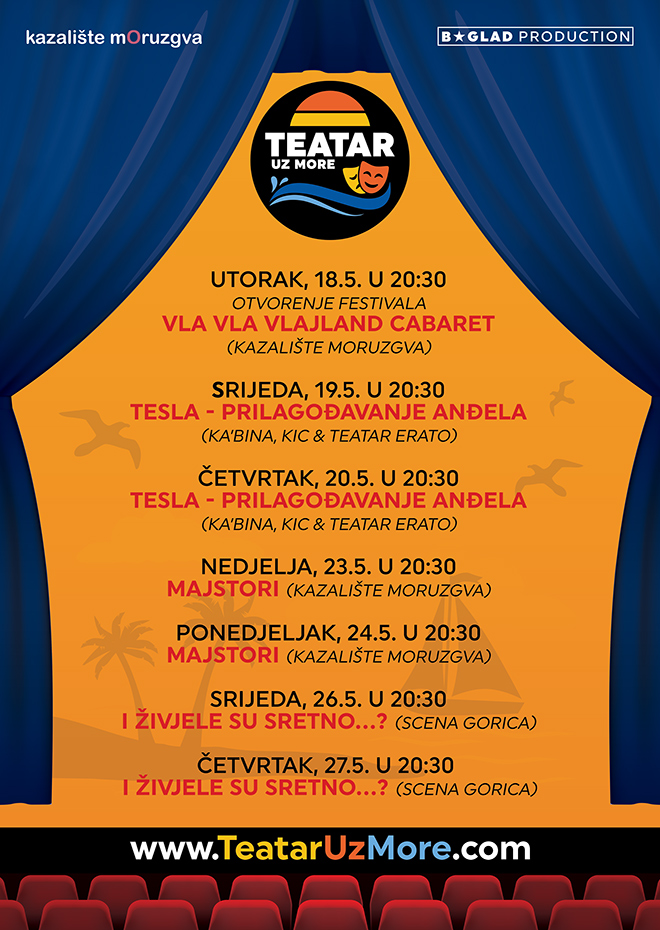
Some of the recognized actors who will enhance this festival with their performances are Ecija Ojdanić, Slavko Sobin, Ksenija Pajić, Vladimir Posavec - Tušek, Ana Begić Tahiri, Momčilo Otašević, Mila Elegović, Bojan Jambrošić, Mladen Čutura, Ana Gruica Uglešić, and Katarina Baban.
"There are sometimes some wishes that you can hardly say out loud to yourself. Such a wish was a theater festival to my taste, and here it is finally, and also in my Split! B GLAD Produkcija and Amadeus events are partners of the Moruzgvi Theater in fulfilling this wish, and behind these names are people, long-term associates, and friends with whom this whole idea took its place," said Ecija Ojdanić, head of the Moruzgva Theater, emphasizing the new location where the people of Split will be able to enjoy cultural events.
Tadija Kolovrat from B GLAD production said:
"We bravely embarked on a great adventure that will launch Split to the top of the list of cultural events this summer, not only in Croatia but also much wider. We are convinced that the audience will reluctantly accept our venture and support us in our adventure. A large number of the highest quality titles from all over Croatia, top performers, beautiful ambiance - all this is Theater by the Sea!"
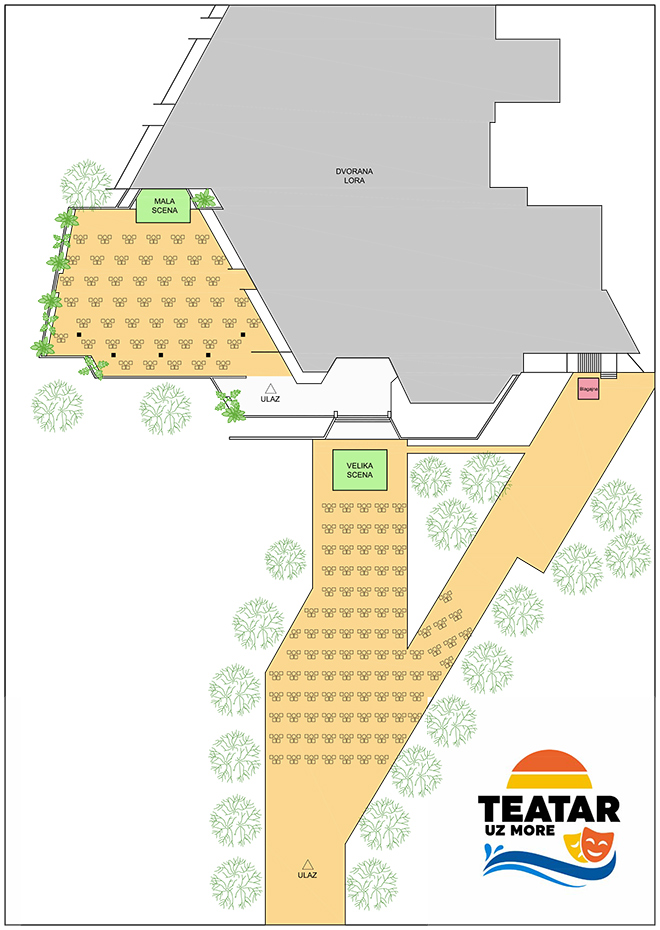
Damir Bubalo from Amadeus events said that they are aware of the crisis and all the difficulties that the pandemic has brought us. Still, he believes that despite that, the non-institutional theater scene in Split has never been richer.
"There is never too much cultural content in our city, and there is an audience for all programs. Our audience guided us in choosing theatrical titles in the desire to offer our fellow citizens quality cultural content and a direct departure from the currently worrying reality. We are looking forward to spending time with the audience and actors, and all this, of course, respecting all epidemiological measures," said Bubalo, adding:
"I expect theatrical Ultra or Woodstock."
Alijana Vukšić, director of the Split Tourist Board, said that she was pleased to support the event, which will enable fellow citizens and tourists to enjoy art and outdoor entertainment.
"Despite the pandemic, such outdoor events will provide an interesting and meaningful stay for domestic and foreign tourists. I use the opportunity to invite all fellow citizens to ensure a successful tourist year with responsible behavior," said Vukšić.
The Moruzgva Theater will present the pre-premiere of 'Zvonili ste, Zorane' and the hit performances 'Vla, Vla, Vlajland,' 'Majstori,' 'Preko veze,' and 'Gola u kavezu'.
B GLAD production will be a guest with the pre-premiere of 'Puni pansion,' a new play '4 poze, sretan svršetak' and the well-known titles 'Politician,' 'Who the f *** is Biba' and the children's musical 'Mi o vuku.'
In addition to the Moruzgvu Theater and B GLAD production, as organizers of the festival, the repertoire will also include theatrical performances of their colleagues.
Just some of the performances at the new Split festival are the premiere of 'Tesla - Adapting Angels' (Ka'Bina, KIC & Teatar Erato).' They lived happily ...? '(Scena Gorica),' Dogs, money, guns' (GKM Split), 'Don't give up, Njofra' (theater group Lectirum), and many others. The program will be enriched by the children's theater Žar ptica with excellent children's performances.
The festival was supported by the Ministry of Culture, the Split Tourist Board, and the inevitable friends of culture Bakra Steak & Pizza Bar and Tavern - Pizzeria Lučac.
For more about lifestyle in Croatia, follow TCN's dedicated page.
People Also Ask Google: How Many Days in Split is Enough?
February 23, 2021 - Continuing the TCN series answering the questions posed by Google's People Also Ask function, this time, one that is asked more often than not. How many days in Split is enough?
This is the ultimate question. And if you really wanted my honest opinion, I'd tell you to stay forever (here is why). Because that is not a reality for everyone, I've set out to find a happy medium for travelers making their way to Split, based on various scenarios, like seasons, main attractions, and those balancing the work-travel lifestyle of a digital nomad.
So, how many days in Split is enough?
While I have been visiting Split since 1996, I only really first fell in love with the city during my first full year here, or once I experienced Split outside of the peak summer months. September is now my favorite month in Split, and the magic of Diocletian's Palace during a brisk bura breeze or a warm spring day on Marjan is beyond compare.
But Split has and always will draw hordes of tourists in the summertime, and it's not difficult to see why. Thanks to its glistening coastline, outdoor activities, bustling city center, vibrant nightlife, and booming culinary scene, Split could equal one of Europe's top metropolitan cities if it maintained the summer buzz year-round.
But there is certainly an argument for each season and how many days are adequate given the time of year. Though I believe it all comes down to preference, in the end.
How many days in Split is enough in the preseason?
Ah, the magic of spring! While Croatia's preseason begins earlier each year, it's safe to say that Easter weekend is the official start of the preseason. However, before COVID-19, many airlines launched their summer flight schedules at the end of March, bringing tourists to Split even before the spring holiday. While there may not be as many connections now given the current circumstances (some airlines are pushing traffic back to May), if there is a will, there is a way - and Split in spring is pure bliss.
You'll notice restaurants and bars reopening after winter hibernation, sunny days and temps in the teens (Celsius), and empty alleyways usually swarmed by tourists in the summer. The biggest crowd you'll find is that of sunglass-clad locals gathering on the Riva for their morning coffee, enjoying every moment of spring sun before the summer storm (of tourists).
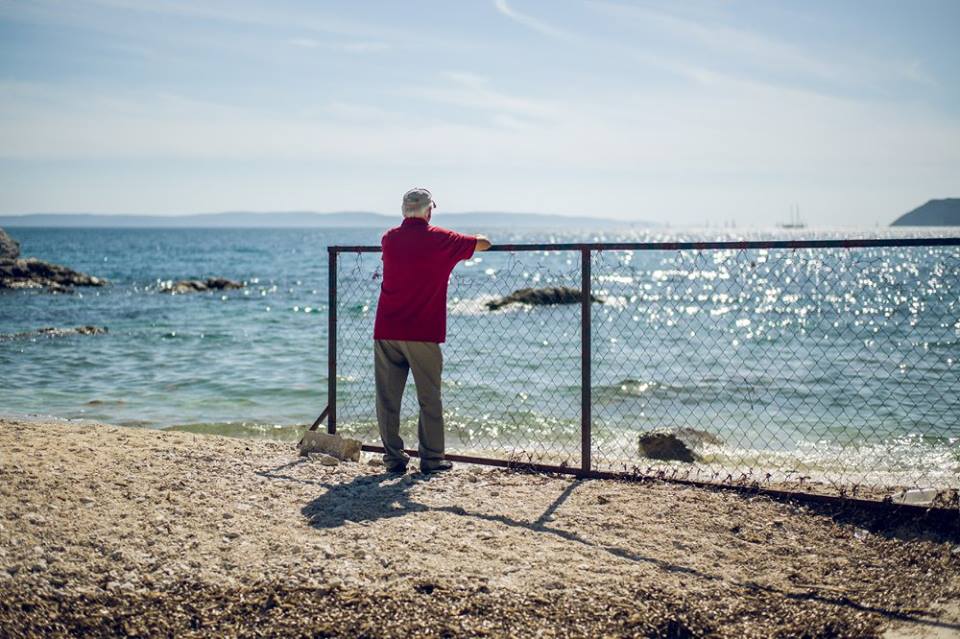
Matthew Christopher Miller
Nature flourishes in the spring. The local green markets are decorated with seasonal charms like wild asparagus and fava beans. Active tourism enthusiasts can hike in the hinterland or enjoy Mosor mountain without the blazing heat.
Spring is also crowned by events, the highlight of which is Split City Day, Sveti Duje, celebrated on May 7 each year. The event gathers thousands of citizens in the center for concerts, boat races, and fairs for days. While we can't say which events will happen this spring, the Croatia Boat Show has been announced for May, bringing the nautical elite, restauranteurs, and tourism reps to Split for five days before the official start of the 'peak' season.
Those of you looking to take day trips to islands will find that Jadrolinija still operates on the winter schedule, resulting in fewer connections (and much of the island closed). Still, those traveling by car can embark on journeys up and down to the coast, and even enjoy cheaper ticket prices at Krka National Park, only an hour away.
Visiting in the spring also comes with friendlier accommodation prices, making it a season with more bang for your buck!
Split in the spring is a sort of re-birth - when the city and its people come alive. While much of the city is just waking up, we suggest you take your time to enjoy the serenity of Split in the spring, and if you stay here long enough, you may even be able to swim.
How many days in Split is enough in the peak season?
Because most people choose to visit Split in the summer, how many days in the peak season is enough?
My honest answer to friends visiting from California is usually no less than five days. Why? Because while Split is a travel hub with access year-round, it is the epicenter of Dalmatia in the summer.
The truth is, those five days are never enough, and the majority of my friends plan to come for a week or more the next time they visit.
But what makes Split so hot (literally) in the summer?
In short, the city is a playground for all types of tourists. Whether you're in your early 20s and want to go bar hopping and nightclubbing until the early morning hours, or rather spend your days at the beach, trying your hand at water sports and rock climbing adventures, or exploring the historic center and its culinary charms, there really is something for everyone here.
And if you grow tired of Split (though highly unlikely)? It's the perfect base for a day trip to the islands, with numerous connections and Brač, Hvar, and Šolta only an hour away. You can hop on the bus or rent a car to visit the UNESCO-protected museum town of Trogir in 30 minutes, or head down the coast for a canyoning adventure in Omiš (but beware of summer traffic). You can tick off Šibenik, Primošten, and Rogoznica on a day trip to Krka National Park and head inland to horseback ride in Sinj (or watch the Sinjska Alka) in under an hour.
Music festivals like Ultra Europe see partygoers stay in Split for a week during the summer, while the Split Summer Festival and Diocletian Days events keep tourists amused with live music and historical entertainment for weeks on end.
The weather is HOT, the sun is shining, the sea is warm, and the air connections aplenty. If you don't mind the crowds or the heat, there is no time limit to Split in the summer. That is if you can afford it.
How many days in Split is enough in the offseason?
Split's shoulder season has become a favorite time for visitors, as September and October offer the perks of summer with usually milder weather and without the peakseason crowds.
The true offseason, however, is usually the quietest time of the year in Split. Some of Split's restaurants go into winter hibernation, as do its people, and empty squares and promenades are a reality in November.
But winter does have its perks, and while locals need some time to rest after a summer of hard work, they come back out to play in December for the festive Advent event. While we didn't get to enjoy it in 2020 due to obvious reasons, Advent usually lasts the entire month of December and into January, where you can ice skate, imbibe on mulled wine and hot gin, and enjoy sausages, live music, and Christmas-themed events.
You’ll also find that many restaurants in Split embrace the colder months with fare destined to warm your bellies, and many restaurants in the city stay true to the classics and traditions of Croatia for the new season to give you a taste of home cooking.
January and February are always the slowest months in Split, and whatever bars and restaurants reopened for Advent may close for 'renovations' until the spring.
But the offseason still offers plenty to do, like visiting its museums (Split City Museum, Meštrović Gallery, and Museum of Illusions are some of the most popular). You can enjoy ballet and musicals at the Croatian National Theater or catch the city's beloved football club Hajduk at Poljud until mid-December before they break until the end of January.
Split is also only a couple of hours away from Kupres in Bosnia & Herzegovina, a hit for Dalmatian skiers in the winter.
Nature never goes anywhere, and you could spend weeks exploring the natural wonders of the region with Split as your base. And if you can brave the winter bura wind, you may want to stay even longer.
How many days in Split is enough to explore Diocletian's Palace?
Now, one of the main draws to Split is Diocletian's Palace - and it's no surprise why. This UNESCO World Heritage Site was once Emporer Diocletian's retirement home, and today it wows world travelers thanks to its beauty and grandeur.
But how many days in Split do you need to explore this 4th-century palace?
It's first important to know that the palace makes up the city center's historic core and is marked by four gates through which you enter - the Golden Gate, Silver Gate, Iron Gate, and Brass Gate. Once you're within the palace walls, you'll notice shops, restaurants, bars, all connected by narrow cobblestone alleyways, which will likely get you lost more often than not.
The palace is also marked by many historical attractions, like the Saint Domnius Cathedral, Peristyle, Vestibule, Temple of Jupiter, and, of course, the famous substructures, or Diocletian's basement.
You could spend all day walking around Diocletian's Palace without really realizing it as local life bustles through, but should you stop to examine the details; you'll want to spend a bit of time here. Some say that a 75-minute walking tour is enough to experience Diocletian's Palace and its 1700-year-old history, which is probably true. But if you were to really embrace the essence of what Diocletian's Palace is for the city today, you'll need at least a few days eating and drinking your way around palace walls, among the locals, to stumble upon all of its charms.
How many days in Split is enough for a digital nomad?
If you're balancing the work-travel lifestyle and are planning on taking advantage of the new digital nomad visa in Croatia, we suggest you make full use and stay a year. Split is a mecca of coffee shops and new coworking spaces. You can enjoy fast internet, good weather, and safe streets. It's also affordable for long-term rentals in comparison to other European cities. Not to mention you'll get to experience everything I've written above - every season, every inch of Diocletian's Palace, and everything that makes Split as special as it is.
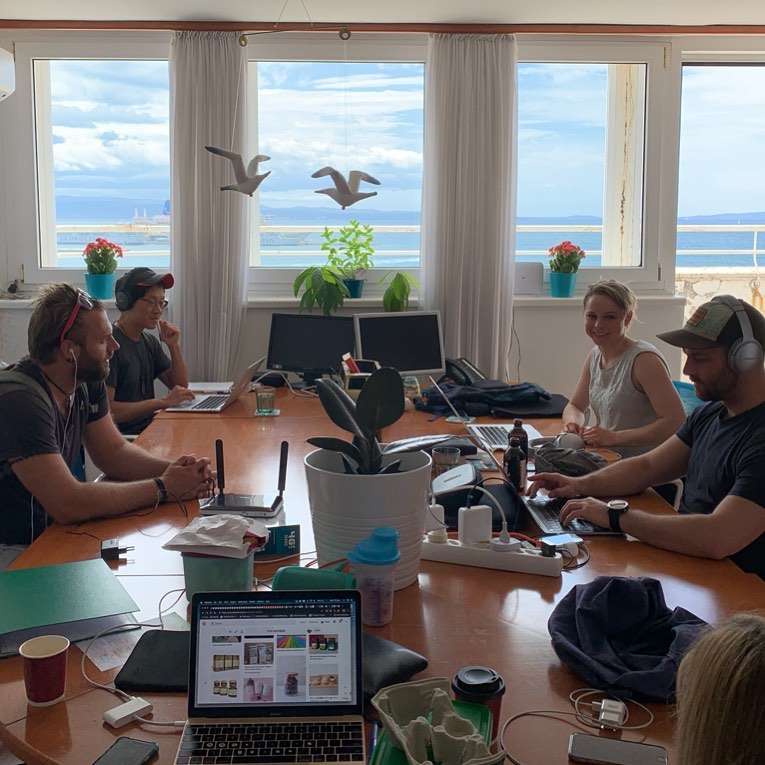
Saltwater Coworking Space
Conclusion: How many days in Split is enough?
All in all, that's entirely up to your time, budget and preference. Truly, there is no number of days too large. I am going on six years here and Split still finds ways to surprise me. You will certainly feel the magic of Split during an afternoon coffee or a night around town, but to truly embrace the essence of the city, do yourself a favor and stay a little longer.
To follow the People Also Ask Google about Croatia series, click here.
Split Advent 2020: Festive Weekend Ahead with Klapa, Saint Nicholas, and More
December 5, 2020 - Split Advent 2020 continues this weekend with Riva concerts and a visit from Saint Nicholas.
UPDATE: SATURDAY'S RIVA PROGRAM POSTPONED
As part of the second Split Advent weekend under the slogan "Love unites us", on Saturday, December 5, 2020, and Sunday, December 6, 2020, a commemorative Advent program will be held on the Riva from 11:00 to 13:00.
Saturday's Advent program consists of performances by the men's klapa "Ježinac", police klapa "Sveti Mihovil", a duet of Edi Šegota and Mislav Biočina accompanied by the "Cambi" band, while saxophonist Mladen Baučić Baucho and Trio Baucho will entertain all passers-by on the Riva on Sunday. On the same day, December 6, the arrival of Saint Nicholas and Santa Claus awaits, who will greet the children at noon and distribute gifts, respecting all epidemiological measures.
Don't forget, for Saint Nicholas Day, a creative competition has been announced for the smallest artists in the Split area, in which ten of Saint Nicholas' favorite drawings will receive gift packages to their address.
"The drawings can be published by parents on the Split Tourist Board Facebook. After random selection, parents will then submit their address to the Tourist Board. The drawings are collected until Sunday, so don't waste time and submit your artwork for comment here today," said the Split Tourist Board.
"Saint Nicholas has always cared for other people, especially the youngest, and today he is known as a saint who gives to good children. As a bishop, he lived near the village with many children who had no toys. Diligent children cleaned their boots every night to wear them shiny again the next day. As Saint Nicholas was very skilled with wood, he began to make wooden toys to give to children on his name day, hoping to bring a little more joy. When Saint Nicholas grew old, and he could no longer make toys as before, his parents continued his tradition and started putting whatever they had in the house in children's boots, such as candy, nuts, or fruit, wrapped beautifully. Such a custom has continued to this day," they concluded.
In 2020, more than ever, the primordial connection between people is important, which is the guiding thought of this year's Advent in Split under the slogan "Love unites us". From November 28 to January 6, Split will become a source of new hope, relying on the love that unites each person with their loved ones, even when, during a pandemic, they are deprived of intimacy and embrace. The entire event, therefore, will be held in accordance with the measures of the National Civil Protection Headquarters, such as the mandatory wearing of protective masks and keeping a physical distance.
Follow the entire program of this year's Split Advent via the Facebook and Instagram profiles of the Split Tourist Board, where the latest information and interesting competitions are published every day.
To read more about lifestyle in Croatia, follow TCN's dedicated page.
Split Gastroadvent 2020 Kicks Off at Makarun with Vitamin D-Packed Mediterranean Menu
November 29, 2020 - The first Advent Sunday candle of Split Gastroadvent 2020 was lit by print media journalists at Makarun restaurant. Given the current corona world, a Vitamin-D-inspired Mediterranean menu was the star of the show.
Split Gastroadvent is a unique event that fuses nutrition, gastronomy, and tourism. With several years of dedicated work on gathering knowledge and skills, it reaches everyone and all parts of the world, through the image, pen, and voice of dedicated journalists, who bring light to Split in this unusual year as well.
As 2020 marks the jubilee 10th anniversary of recognizing the Mediterranean diet, this year's theme pays great attention to the sea. The Mediterranean Sea boasts an area of about 2.5 million km² and connects all countries of the original Mediterranean diet.
Following this theme, this year's Gastroadvent wreath is also dedicated to the sea and its preservation. The seafoam wreath symbolically and literally simulates the sea world and is created from discarded trash and plastic. The Mediterranean diet theme inspired prominent sculptor Nives Čičin Šain to send a message in an artistic way: “Let's preserve our sea and the life in it that feeds many with its beauty."
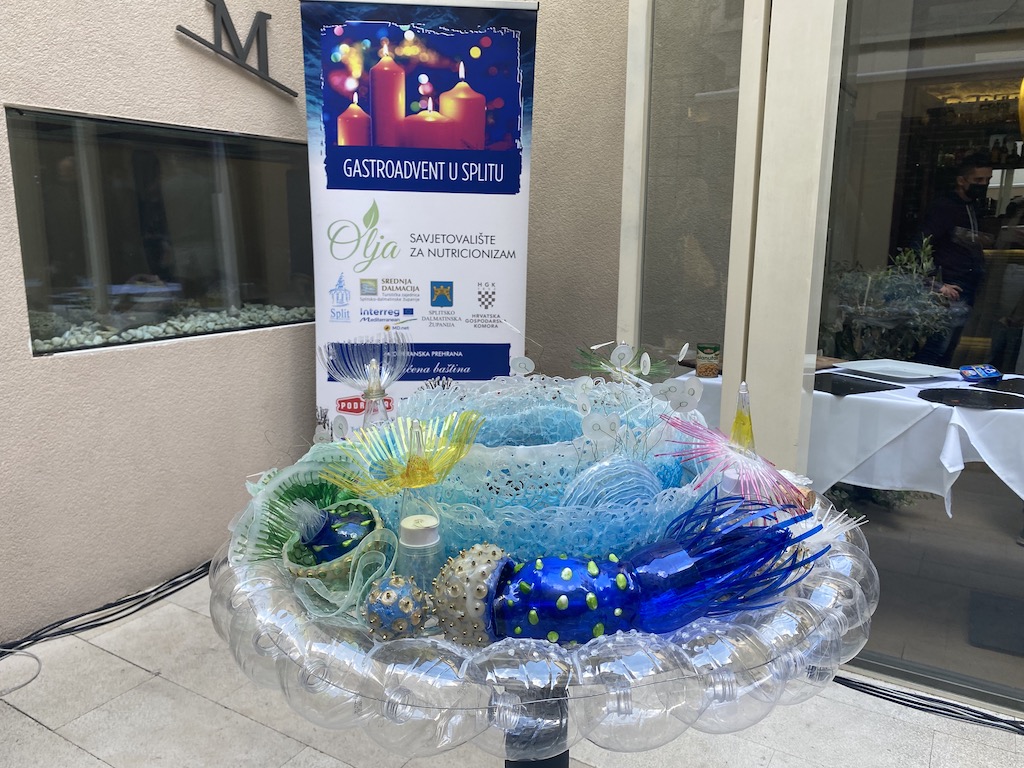
The sumptuous gastronomic table adorned dishes prepared and served according to epidemiological measures by the Makarun team. Talented Chef Ivan Planinić chose smoked mackerel with Vis capers and golden apple, amberjack filet prepared in three ways and three colors, and macaroni according to a Žrnovo recipe with spinach and a shrimp and scampi sauce.
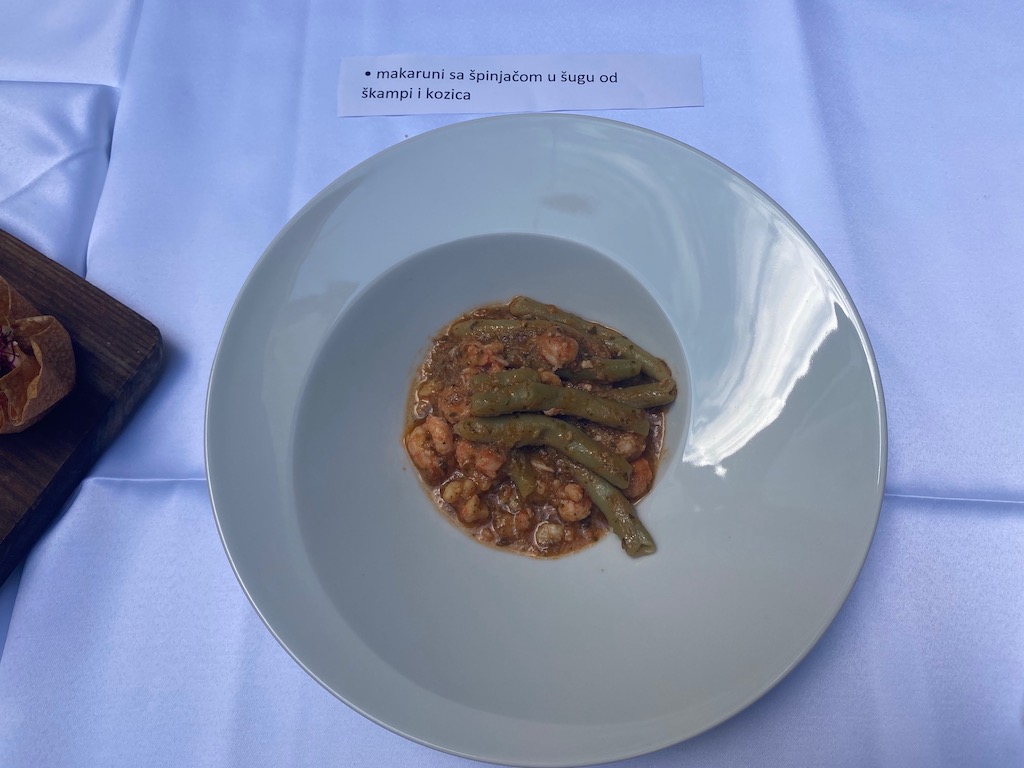
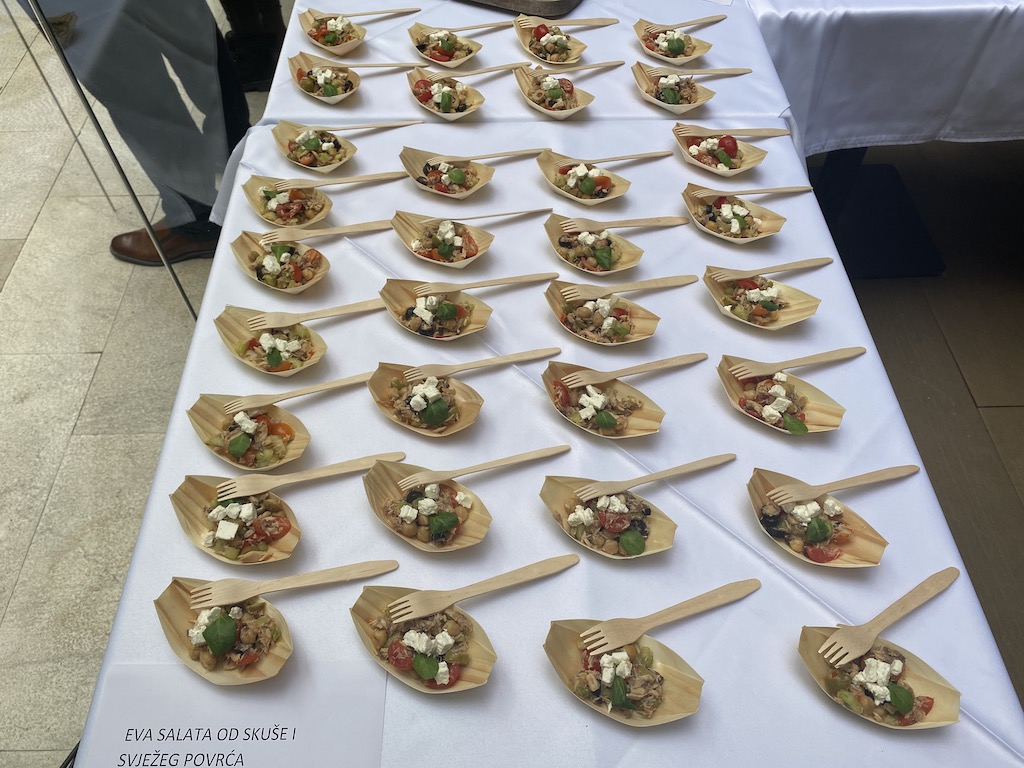
Special dishes made of fish and fish products were prepared by renowned Chef Michel Tokić from Podravka, whose knowledge and skills of cooking with EVA products are recommended especially for those who have neglected the consumption of fish and want to compensate for Vitamin D.

Responsible and healthy catering was presented by Michel Tokić, including Mediterranean sandwiches, Mediterranean tuna tortilla cups with melon, tuna and avocado cups, Eva salad of mackerel and fresh vegetables, and mini tuna burgers.
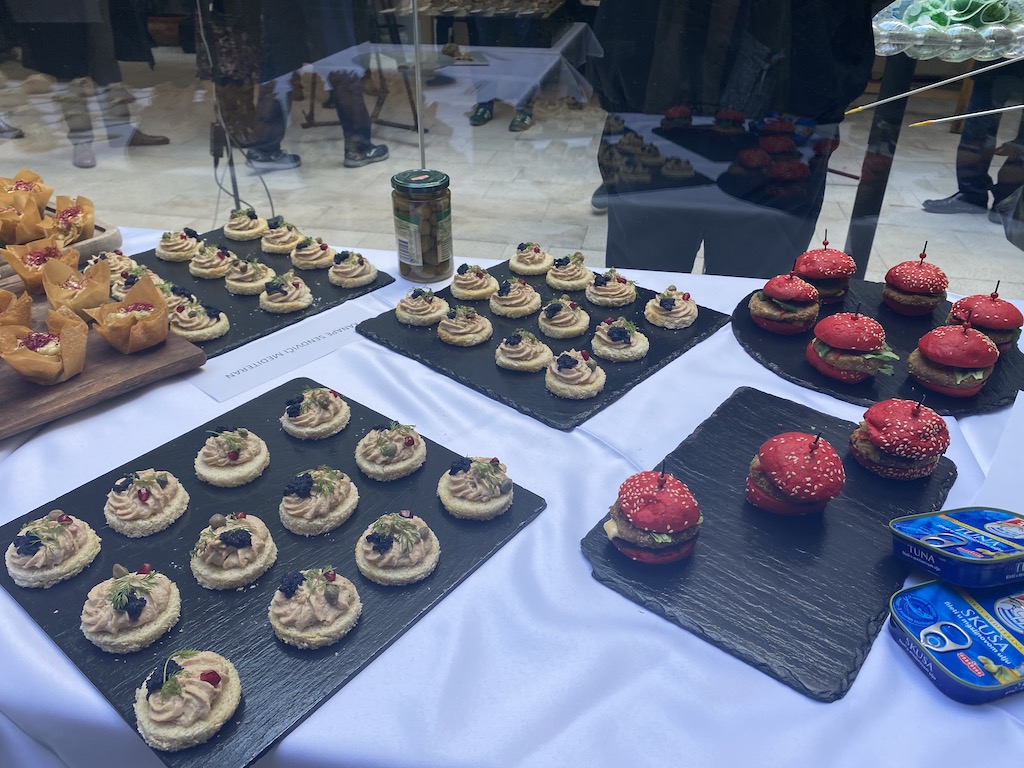
The Croatian Chamber of Commerce has been advocating for years to encourage the representation of fish on menus. For ten years now, the Croatian Chamber of Commerce has implemented the project "Croatian Fish - Eat its Worth." The project aims to increase consumption of local fish products and build and raise the culture of fish consumption in Croatia, all by raising consumer awareness of the importance and investment in sustainable fisheries, the high nutritional and health value of food originating from locally regulated catches or farming, and the importance of the product they consume from a food safety system of well-known, high standards. This project is of special importance, which was emphasized by President Jozo Tomaš, and confirmed by the cooperation with Gastroadvent in Split.
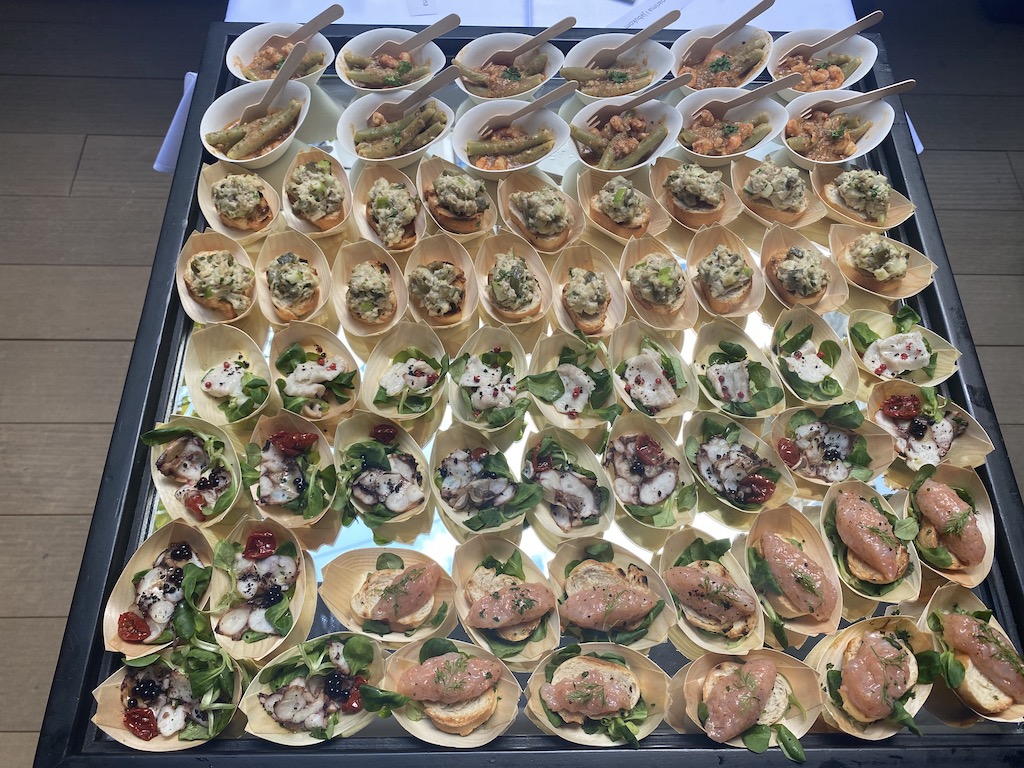
The fruits of the Adriatic Sea were presented by Gastro Ribarnica Brač, a company that makes seafood more accessible through regular campaigns, and with its professionalism guarantees safety and originality. In ten of its own fish markets in the region, in addition to fresh fish, they offer a rich selection of frozen, dried, marinated, and salty delicatessen products.
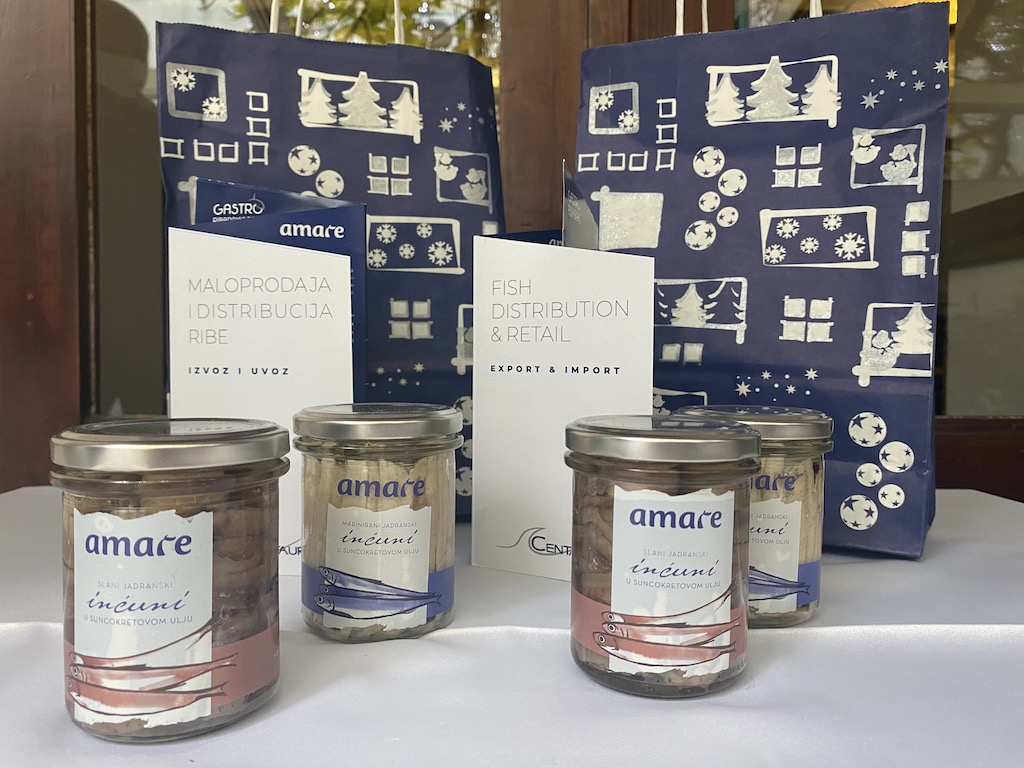
The event also highlighted ecology and competitiveness in gastronomy and tourism as the core of future projects of the Split School of Tourism and Hospitality. Under the leadership of director Ivo Bilić, the Split School of Tourism and Hospitality Management was appointed a Regional Center of Competitiveness in the summer of 2018.
An important role of the RCC is the connection to the local community, and is manifested through two goals:
1) Projects with kindergartens and primary schools in creating habits among young people and encouraging reflection on tourism, and on the other hand as promoting our professions,
2) Participation in local (regional) events, creating habits among the population about the benefits and importance of caring for the guest-tourist.
This year's Gastroadvent also features Mediterranean Food - MD.net, a project funded by the European program Interreg Mediterranean, worth 3.7 million EUR, and implemented by the Public Institution RERA S.D. for the coordination and development of Split-Dalmatia County. The project involves 14 project partners from 9 countries in the Mediterranean, which is aimed at popularizing the Mediterranean diet. The main goal of the project is to strengthen research in this area in accordance with the UNESCO Convention on Mediterranean Nutrition, to raise the quality of food and life in 9 project partner countries, as well as promote the Mediterranean diet, which is recognized as the gold standard of proper nutrition, as well as its far-reaching beneficial effects on health.
These innovative food products designed by students were presented at Gastroadvent 2020, which you can see below:
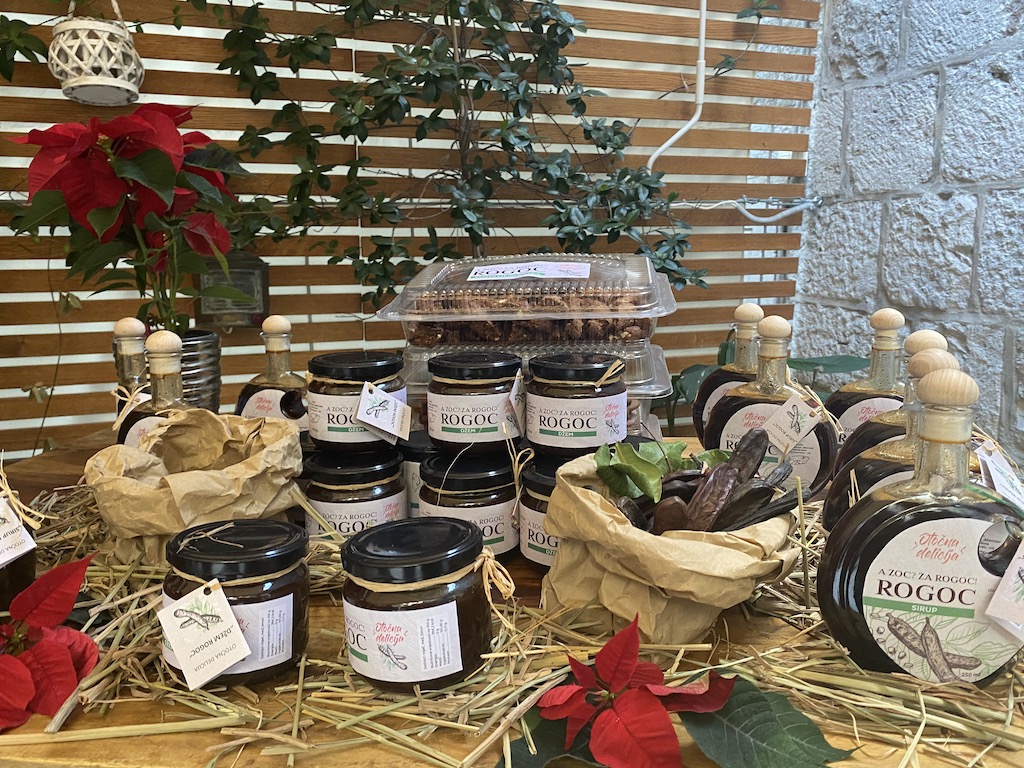
The student's mentor and workshop organizer, Michael Freer, said a few words:
"The project is working with five schools to create an innovative product. We are the end of it now, the products are ready, and each school had to use a famous Mediterranean-based ingredient from the island or their location. The idea is that with the 5,000 EUR they received through MD.net, they're able to invest in something that they can then sell. The idea is that the profit goes back into reinvesting in the student cooperative, and also hopefully to fund their dance at the end of the year, if they can have one."
Given the current circumstances, all food items were packed for guests to take home!

Split Gastroadvent is held every Advent Sunday at a new location!
To read more about lifestyle in Croatia, follow TCN's dedicated page.
See Together Challenge: Diocletian's Palace to be Live-Streamed to Viewers Around the World
October 20, 2020 - UNESCO World Heritage Site Diocletian's Palace will be live-streamed to viewers around the world on Thursday, October 22, as part of the 'See Together Challenge' by Seoul company Magenta.
Magenta, a documentary production company based in Seoul, South Korea, is launching a new project titled ‘See Together Challenge’.
The project is co-hosted by SK Telecom, the National Korean Committee for UNESCO, and Magenta, and is funded by the Ministry of Science and ICT, and supported by the Korea Radio Promotion Association.
‘See Together Challenge’ was envisioned to lift spirits during the COVID-19 pandemic and to raise awareness of UNESCO World Heritage Sites and the importance of their preservation.
Namely, project participants will film and live stream UNESCO World Heritage Site(s) to global viewers for 1 hour and then pass on the live stream to the next participant, who will film for an hour at their location, and so forth. The videos will be live-streamed on Youtube and will run 24 hours a day, for one week, beginning on October 21, 2020.
The videos will also be edited into a two-part documentary on social distancing, which will be aired on KBS, a national broadcaster in South Korea.
Since Croatia boasts some of the world’s most spectacular UNESCO World Heritage Sites, it comes as no surprise that the country will be featured in this admirable project.
Thus, among the various Croatian UNESCO heritage sites is the breathtaking Diocletian's Palace. Famous Split tour guide Ivica Profaca will lead viewers through its ancient stone walls and unveil its history to future travelers around the world on October 22 at 10 am.
To find out more about our project, you can visit the official website and watch the official promo video HERE.
For the latest travel info, bookmark our main travel info article, which is updated daily.
Read the Croatian Travel Update in your language - now available in 24 languages.


